La Liga
World Cup X-factors: Each team's potential breakout player in Qatar
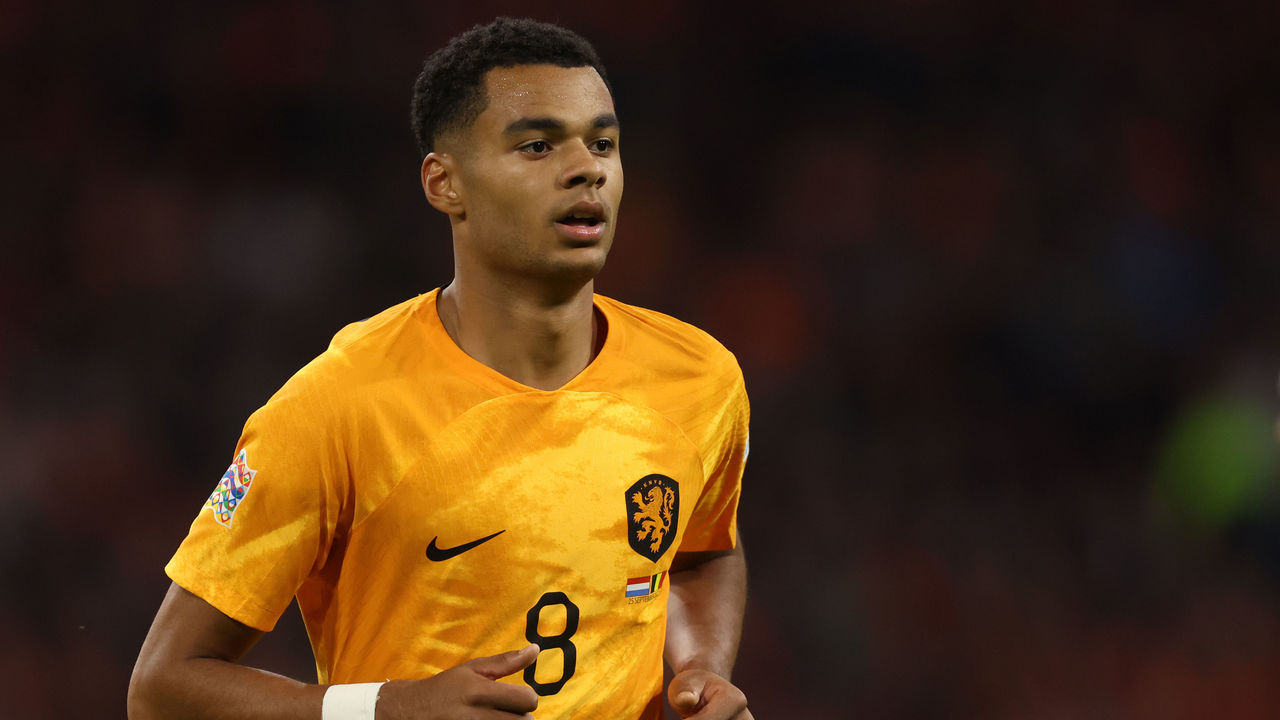
At every major tournament, numerous youngsters and underappreciated stars boost their reputation and value with standout performances. Here, theScore selects a potential breakout player for each national team at the 2022 World Cup.
Group A
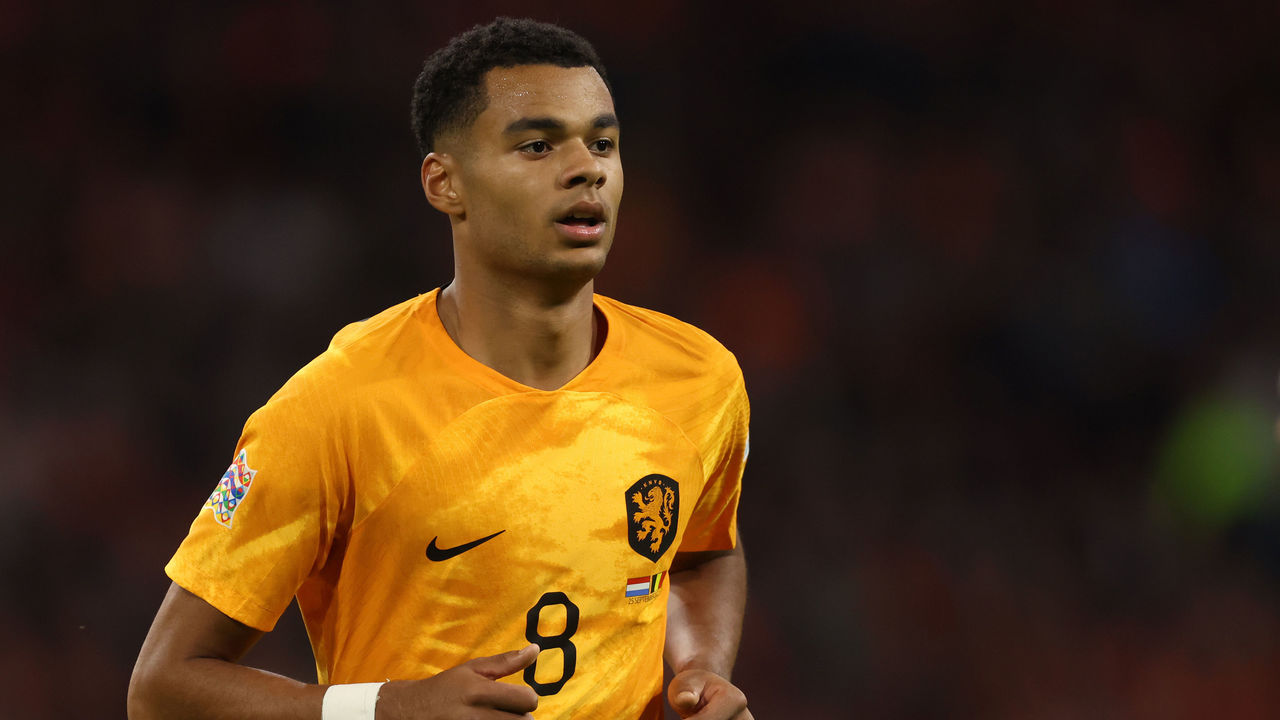
Qatar: Akram Afif. Defender Boualem Khoukhi and goalkeeper Saad Al Sheeb could be the busiest Qatari representatives at the tournament, but don’t be surprised if Afif makes the biggest name for himself. His quality stands far above many of his international teammates and has earned him spells in Belgian and Spanish football. Afif only turned 26 on Friday, so another European side could take a punt on the winger.
Ecuador: Moises Caicedo. Ecuador underwhelmed during its run to the World Cup, but expect 21-year-old Caicedo to turn heads as the engine room in Gustavo Alfaro’s outfit. “His physicality, his self-confidence, his mentality,” Alexis Mac Allister told theScore when asked about what impresses him most about his Brighton & Hove Albion teammate. “I think he’s got everything to become a top player – he already is a top player, but maybe in a big club.”
Senegal: Abdou Diallo. The Lions of Teranga conceded just twice in 660 minutes en route to Africa Cup of Nations glory earlier this year, so expect them to lean on their stingy defense once again at the World Cup. Diallo, 26, was immovable from Senegal’s lineup at AFCON, and, after being involved in expensive deals earlier in his career, his stock could recover in dramatic fashion.
Netherlands: Cody Gakpo. The PSV Eindhoven winger idolized Thierry Henry growing up, and his tendency to drift inside from the left is reminiscent of the Arsenal icon. The 23-year-old’s distribution is also impressive, and he’s surprisingly explosive for someone who stands at 6-foot-2. Gakpo has nine goals and 12 assists over 14 Eredivisie appearances from the left flank this season but mostly operates as a No. 10 for Louis van Gaal’s Netherlands.
Group B
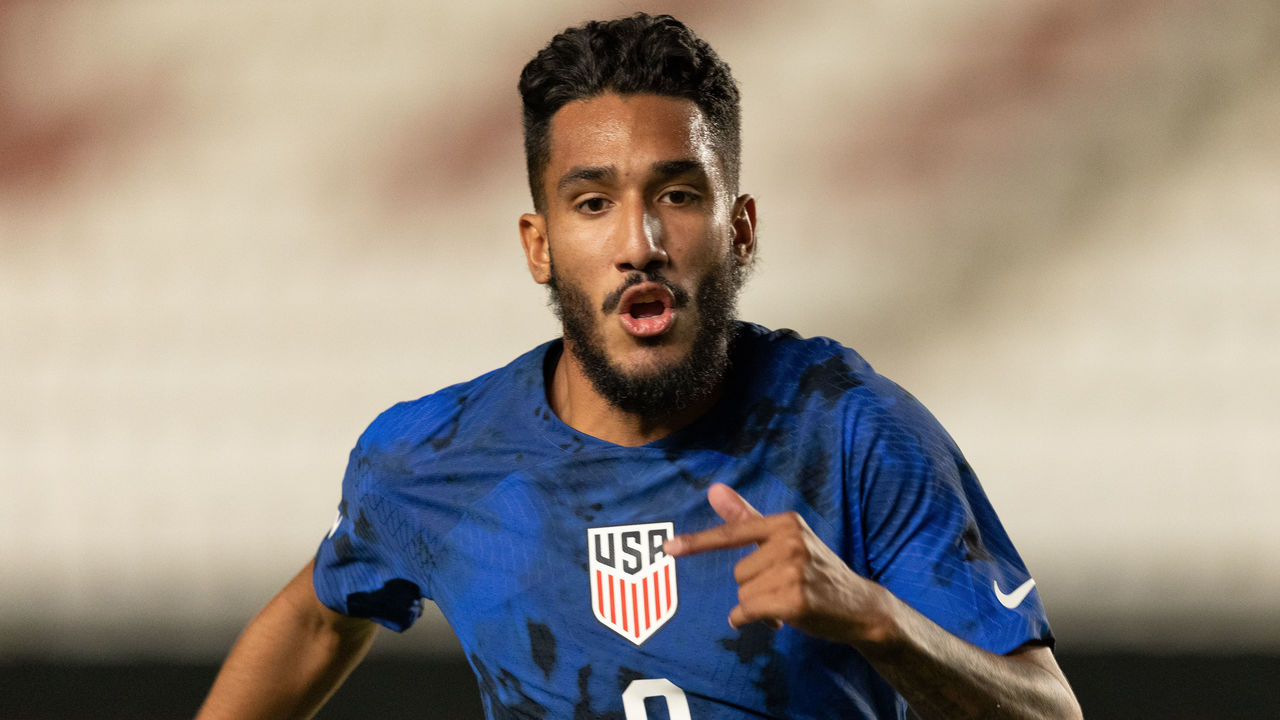
England: Callum Wilson. The 30-year-old was among Gareth Southgate’s surprise inclusions for the tournament, with many preferring Ivan Toney over the Newcastle United striker. There’s no doubting Wilson’s eye for goal. He’s scored 26 goals despite starting only 49 Premier League games for the Magpies and could make a significant impact off the bench in Qatar.
Iran: Saeid Ezatolahi. Mehdi Taremi waited too late to make the move to Europe, but the same can’t be said for Ezatolahi. The midfielder, who joined Atletico Madrid at 17, is now with Denmark’s Vejle and is an aggressive, brawny operator in Iran’s midfield. His energy and decent pressing range are vital to Carlos Queiroz and his team.
United States: Jesus Ferreira. Walker Zimmerman and Cristian Roldan have enough ability to earn late-career moves to Europe, but it’s Ferreira who could be thrust firmly into the spotlight while he profits from the work of the USMNT’s talented hoard of attacking midfielders and wingers. The 21-year-old was named MLS Young Player of the Year after racking up 18 goals and six assists for FC Dallas in 2022.
Wales: Neco Williams. The right-back has quickly become a popular figure at Nottingham Forest since his summer transfer from Liverpool. For Wales, Williams regularly crops up on the left to accommodate fellow full-back Connor Roberts, but that doesn’t diminish the 21-year-old’s contributions. He’s got boundless energy as he sprints up and down the flank, and he could tally an assist or two thanks to his pinpoint crossing.
Group C
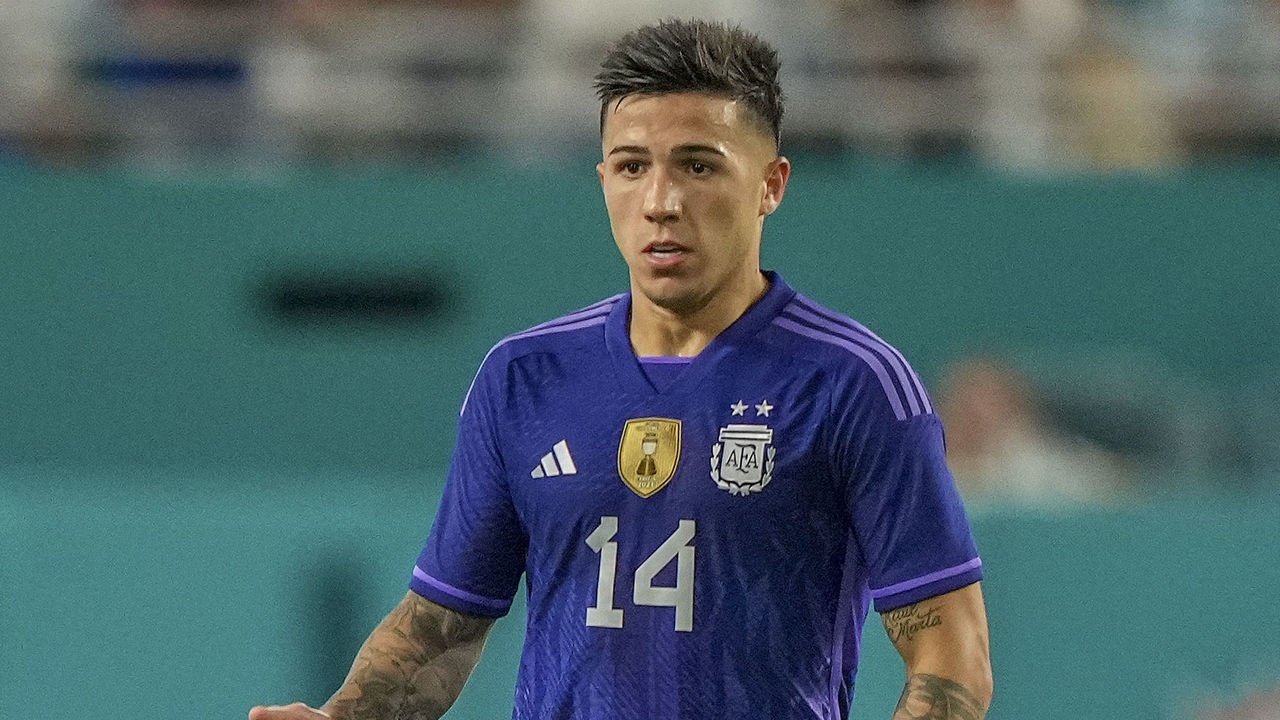
Argentina: Enzo Fernandez. Giovani Lo Celso’s absence through injury has left a gap in Lionel Scaloni’s three-man midfield, and Benfica’s 21-year-old porteno could add bite and excellent spatial awareness to the center of Argentina’s lineup. The slick passer largely operates as part of a double pivot in a 4-2-3-1 formation for his club – a shape Scaloni sometimes opts for – while his inclusion in a 4-3-3 could result in Leandro Paredes being given more license to roam as a No. 8.
Saudi Arabia: Firas Al-Buraikan. There will be tough competition for Saudi Arabia’s No. 9 spot, with Saleh Al-Shehri pushing hard after notching seven goals over 13 qualifying matches. However, Al-Buraikan should be starting his country’s opener against Argentina after the athletic target man hit form for a rather average Al-Fateh side in the Saudi Pro League.
Mexico: Edson Alvarez. It’s hard to believe Alvarez first made his name as a defender for Club America when you witness his elegance at the base of midfield for Ajax and Mexico. He’s the vital link between defense and attack, sometimes orchestrating play from a deep position or selflessly pushing higher up to act as a decoy for his attackers. At just 25, Alvarez has plenty of time to earn himself a big-money transfer from the Netherlands.
Poland: Karol Swiderski. Poland made a habit of scoring late in qualifiers, so substitutes could shine for Czeslaw Michniewicz’s side at the tournament. Charlotte FC’s Swiderski, 25, scored five times during the World Cup qualification cycle despite starting only four games. Fellow backup Adam Buksa – who was playing for the New England Revolution in Major League Soccer until May – was similarly dangerous during Poland’s road to Qatar but hasn’t hit the ground running at Ligue 1’s Lille.
Group D
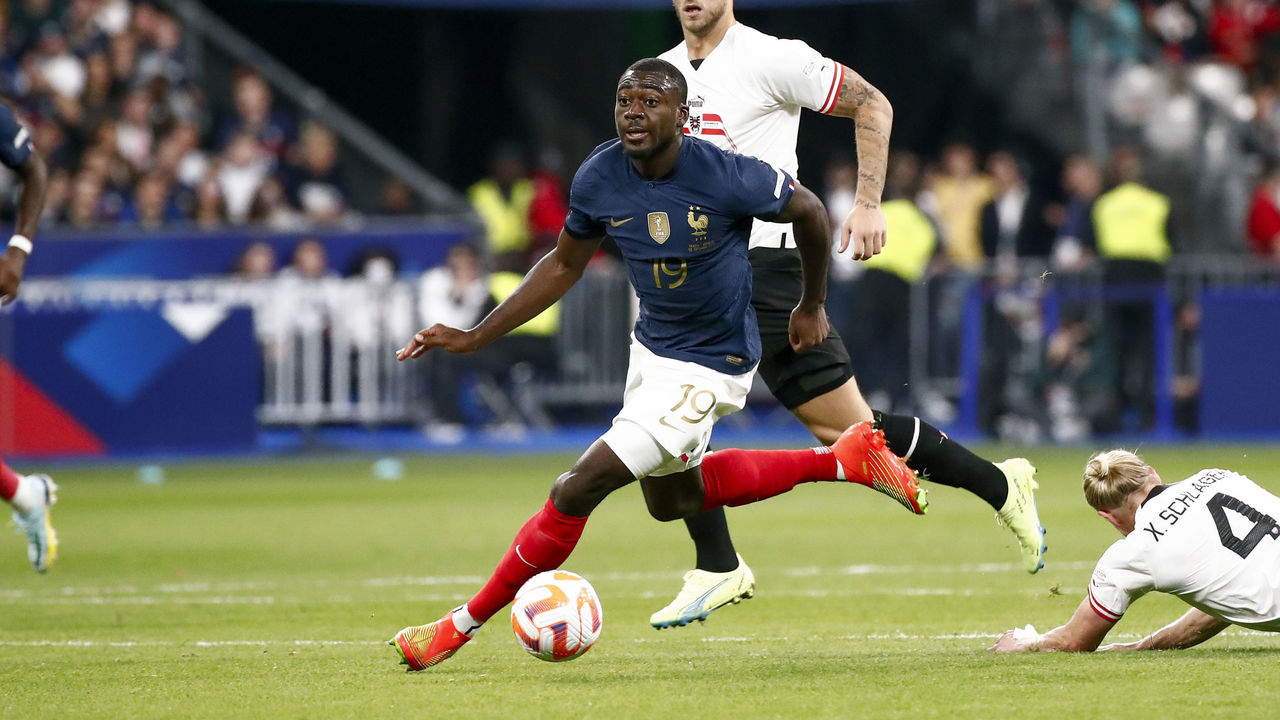
France: Youssouf Fofana. The 23-year-old made a late dash into Didier Deschamps’ roster after making his first two appearances for Les Bleus in September, and he’s now pushing to be a starter in Qatar due to injuries to N’Golo Kante and Paul Pogba. AS Monaco’s Fofana relishes tackles and is a progressive passer from the No. 6 position, and he knows a standout campaign could earn him a blockbuster move to rival the fees Real Madrid paid for fellow France youngsters Aurelien Tchouameni and Eduardo Camavinga.
Australia: Jason Cummings. The former Scottish international, who qualifies for Australia through his mother, has attracted negative headlines for his off-field antics in the past, but his sense of humor and overall eccentric behavior could help make the Socceroos the tightest team at the tournament. The 27-year-old made the World Cup squad after his January move to Central Coast Mariners, where he’s scored 12 goals and provided eight assists over 24 A-League outings.
Denmark: Andreas Skov Olsen. The reputations of Mikkel Damsgaard and Joakim Maehle probably rose most during last year’s run to the European Championship semifinals, so now it’s time for the other flank to shine. Club Brugge winger Skov Olsen, 22, has proven his tactical intelligence with Denmark: He moves inside to make room for the right-back or pick holes nearer the middle of defenses, and he can stay wide to deliver crosses. His pace will cause problems.
Tunisia: Ellyes Skhiri. Skhiri is an invaluable tactical piece for Tunisia, dropping into defense to allow the full-backs to advance while he pushes well-timed passes upfield. He’s completed more tackles and passes in the Bundesliga than any of his FC Koln teammates and ranks second for interceptions.
Group E
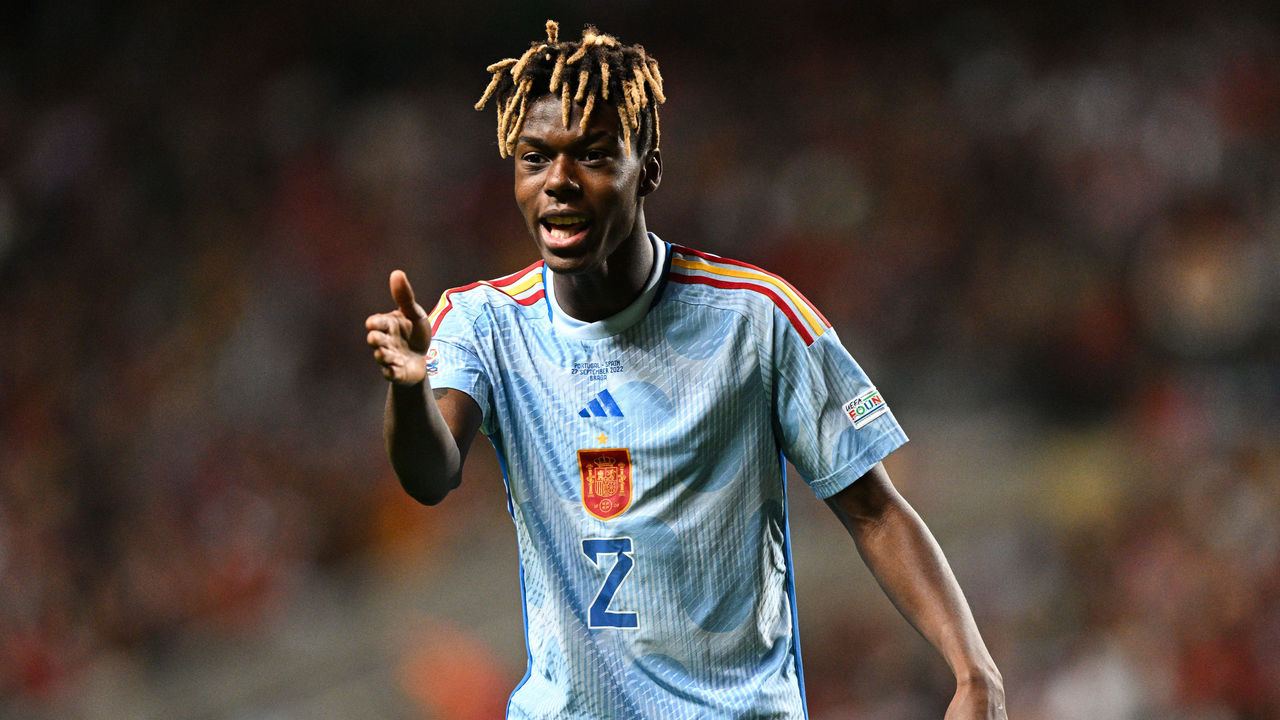
Spain: Nico Williams. Pedri and Gavi’s outrageous potential has already been recognized with numerous individual awards, so they can’t be chosen. Meanwhile, Williams is on the cusp of breaking into Luis Enrique’s XI and could be a genuine breakout star in Qatar. The winger – who’s the younger brother of Ghana’s Inaki Williams – is pacey and full of tricks, and he could be a more daring selection in attack over the tactically minded Dani Olmo.
Costa Rica: Jewison Bennette. The 18-year-old has made a quick impression at Sunderland despite only appearing nine times as a substitute in the Championship. However, manager Tony Mowbray is refusing to answer fans’ calls for Bennette to play more until he settles on Wearside. “Let us hope when the next World Cup comes around, he has played 100 or more games for us and he is a big name on the international stage. He has the talent to do that,” Mowbray said.
Germany: Karim Adeyemi. Jamal Musiala is destined for superstardom, but let’s not pick the low-hanging fruit here. Adeyemi has room to improve, but his confidence and breakneck speed will be a valuable weapon off the bench for Hansi Flick. The 20-year-old’s summer move to Borussia Dortmund was disrupted by an untimely injury, but his quality was clear when he raced to 19 goals and five assists for Red Bull Salzburg in the Austrian Bundesliga last term. “He’s a difference maker,” Dortmund boss Edin Terzic said recently.
Japan: Takefusa Kubo. The 21-year-old has one of the more recognizable names in Hajime Moriyasu’s ensemble from his time on the books of both Barcelona and Real Madrid. He’s now with high-flying Real Sociedad where he’s earned his side six extra La Liga points with his two goals and two assists. He also leads his club teammates in attempted dribbles.
Group F
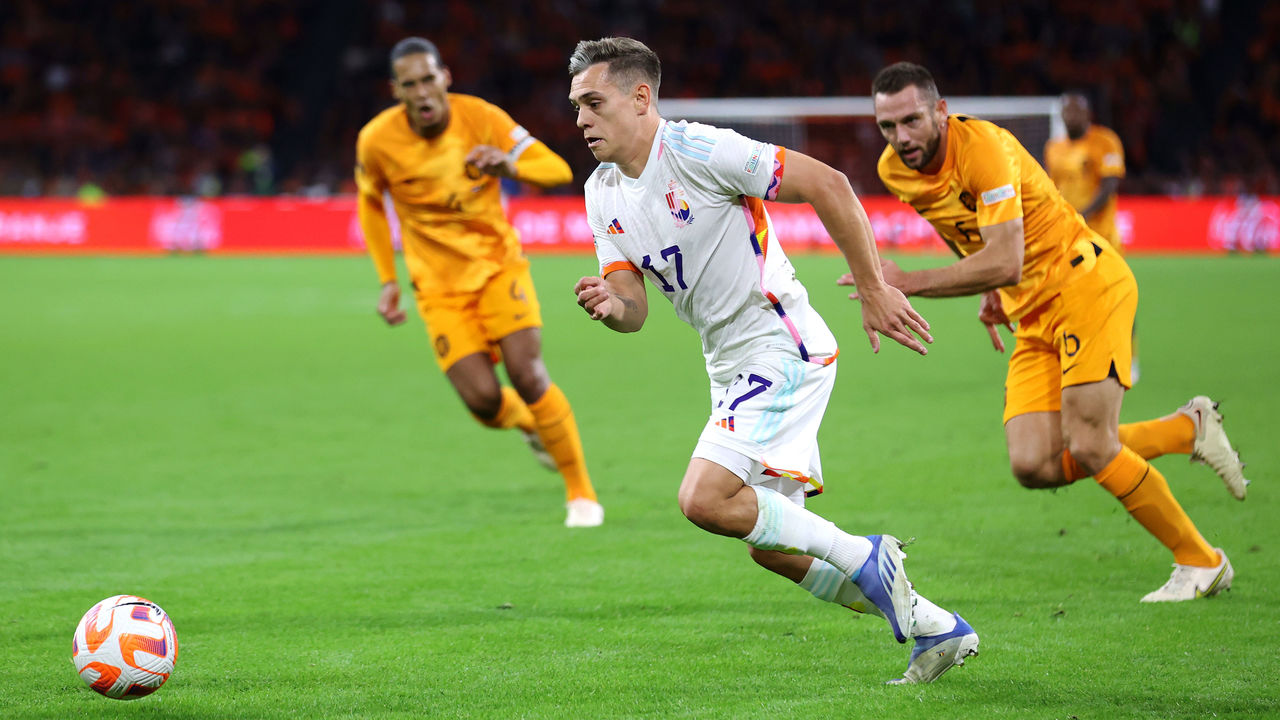
Belgium: Leandro Trossard. Charles De Ketelaere set the hype machine into overdrive through his exploits at Club Brugge, but his displays since his summer move to AC Milan showed he still has a lot to learn. Trossard, on the other hand, is the finished article and could take this tournament by storm if Roberto Martinez has the bravery to start him over one of Belgium’s veteran squad members. Brighton’s Trossard, 27, has seven goals and two assists in the 2022-23 Premier League season.
Canada: Ismael Kone. The 20-year-old’s composure, distribution, and ability to ride challenges are among the many reasons the midfielder has enjoyed a rapid ascent from semi-professional football in Quebec. “With one touch he would eliminate two or three players easily,” Rocco Placentino, sporting director of Kone’s former club CS Saint-Laurent, recalled of his first impressions of Canada’s exciting talent for theScore’s recent feature.
Morocco: Sofyan Amrabat. Many World Cup viewers will be more familiar with Amrabat’s older brother, former Watford winger Nordin Amrabat, but Sofyan’s in the process of outdoing his sibling through his performances for Fiorentina. Morocco can be porous in midfield, but with the ball, the younger Amrabat is an ambitious passer, composed, and extremely difficult to knock off the ball.
Croatia: Luka Sucic. Red Bull Salzburg are known for their conveyor belt of talent, and Sucic has the potential to become a quality winger. The 20-year-old won’t be an immediate starter in Qatar, but Ivan Perisic is 33 and Zlatko Dalic hasn’t settled on a regular player for the right flank. Sucic’s energy off the ball and willingness to test the goalkeeper could be valuable assets for Croatia as it journeys through the tournament.
Group G
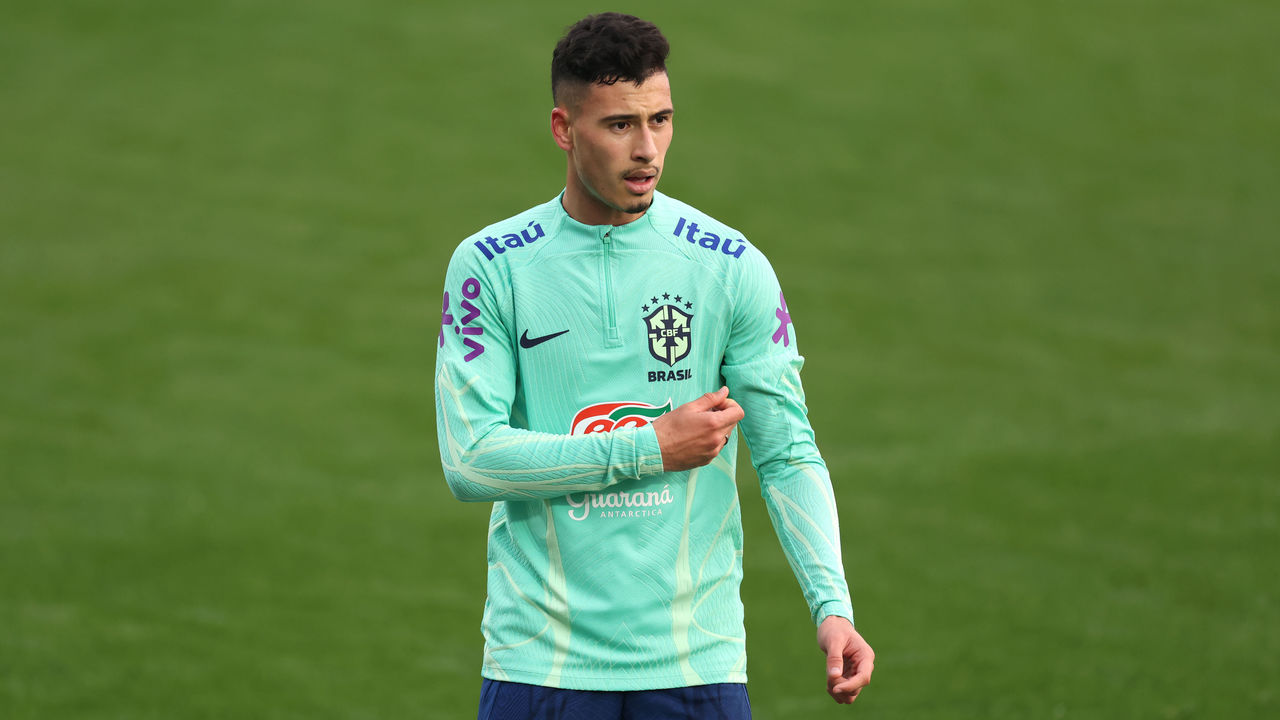
Brazil: Gabriel Martinelli. Is there a Brazilian player who hasn’t broken out? Martinelli is the closest thing to it. The 21-year-old has established himself as a regular starter for Premier League leaders Arsenal, scoring five goals and assisting twice, but he’s one of the least experienced members of Tite’s squad with just three caps. It’ll be tough to break into this lineup, but if Martinelli gets a chance, you can trust he’ll make an impact with his ridiculous speed and lush dribbling.
Serbia: Strahinja Pavlovic. Serbia’s frontline grabs most of the attention and rightly so, but scouts will undoubtedly take a keen interest in 21-year-old defender Pavlovic. He’s an imposing figure at 6-foot-4 and uses his body to intimidate and overpower opponents in duels. Despite his brutish physicality, he’s also a tidy ball-player and is improving quickly with Red Bull Salzburg.
Switzerland: Breel Embolo. The 25-year-old forward is already a veteran of three major tournaments for Switzerland and has been a popular breakout pick for each, but Embolo’s finishing has improved slightly since the European Championship in 2021. He used to play as a winger, so he’s also a skilled dribbler and creator.
Cameroon: Andre-Frank Zambo Anguissa. Bewitching Georgian winger Khvicha Kvaratskhelia has attracted most of the attention at Napoli this season, but Anguissa is turning into a complete midfielder in Italy. He’s a true box-to-box operator, battling for the ball and then quickly trying to create attacking scenarios for his team. At 27, he still has time for a massive transfer.
Group H
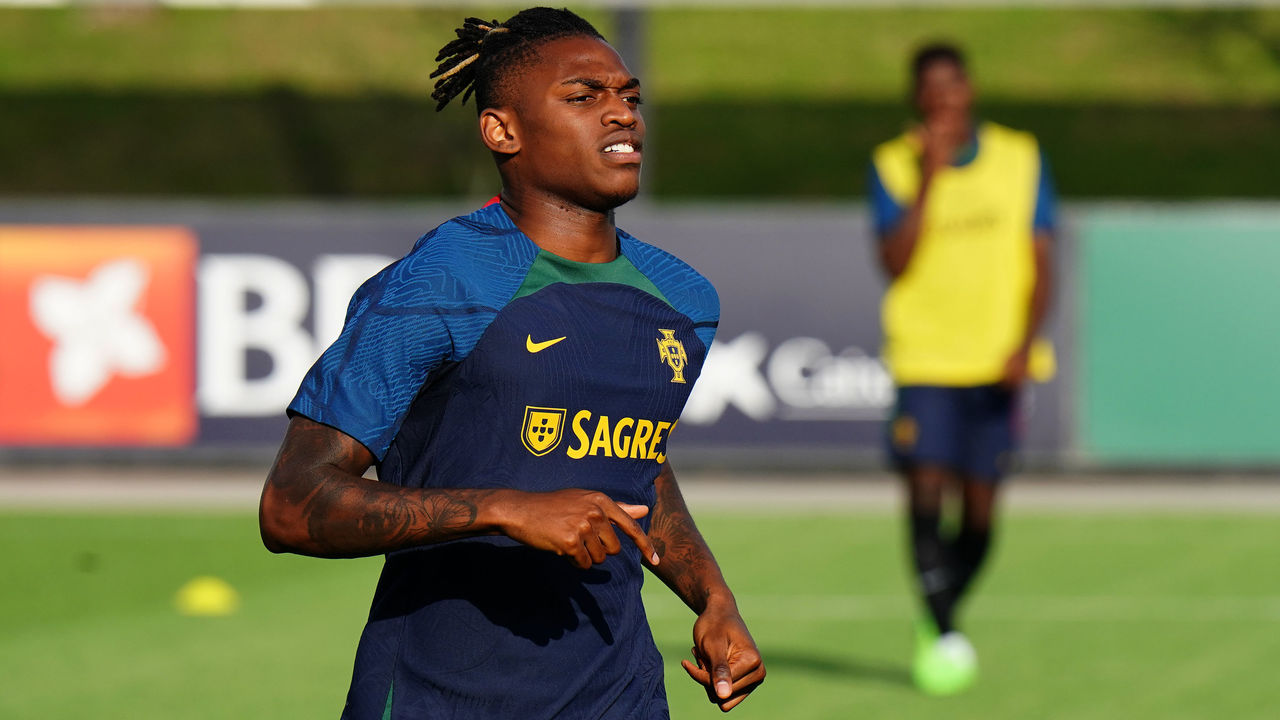
Portugal: Rafael Leao. Leao is one of the biggest names on this list – he was named Serie A’s Most Valuable Player when AC Milan won the Scudetto last season – but it still seems the Portuguese phenom is a little overlooked. The 23-year-old should be demanding a fee that comfortably exceeds €100 million when he eventually leaves Milan. Leao is incredibly entertaining to watch, with one of his unique trademarks being a knack for finding an extra gear as he surges past opponents.
Ghana: Mohammed Kudus. The 22-year-old is already playing in the Champions League with Ajax, where he scored with an explosive effort against Liverpool in September, and has played in every position in the midfield and attack during his career. This could be the competition where he realizes his huge potential.
Uruguay: Nicolas de la Cruz. The Uruguay squad is awash with players starring across Europe, but De la Cruz is 25 and has yet to venture outside South America. In recent months, the River Plate winger appears to have fought off Giorgian de Arrascaeta for a place in Diego Alonso’s starting lineup, and he could rack up a few assists while creating chances for Edinson Cavani, Darwin Nunez, and Luis Suarez.
South Korea: Cho Gue-sung. The worrying form of Hwang Ui-jo intensified Paulo Bento’s four-year search for a No. 9. Jeonbuk Hyundai Motors’ Cho may be the player to belatedly answer his head coach’s prayers. “He has everything: a physical presence, he’s decent in the air, can finish, and perhaps most importantly has great movement,” K League United associate editor Paul Neat explained to theScore.
You may like
La Liga
Look: Adidas drops huge collection of new kits for Euro 2024, Copa America
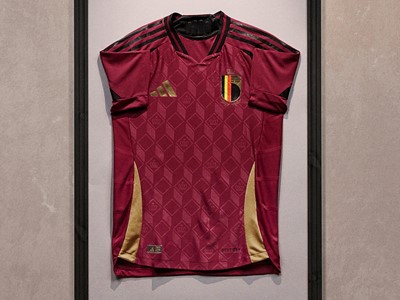
Find the biggest stories from across the soccer world by visiting our Top Soccer News section and subscribing to push notifications.
It’s time to bulk up your wardrobe for the upcoming glut of international football.
With Euro 2024 kicking off in 92 days and Copa America starting six days later, Adidas has revealed two new kits for 12 different national teams. These teams are guaranteed to wear their new uniforms on pitches across Germany and the United States this summer, with the exception of Wales, which must emerge from the Euro 2024 playoffs to ensure top tournament billing.
Adidas will also reveal fresh kits for Jamaica and Costa Rica in the near future. Both national teams face one-off playoffs March 23 to determine whether they’ll compete at Copa America.
(All images courtesy of Adidas.)
Euro 2024
Belgium
Home

The usual combination of colors for Belgium. The Royal Belgian Football Association’s crest features repeatedly in the shirt’s pattern.
Away
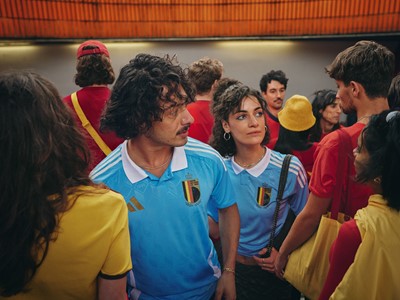
It’s the Tintin kit! The blue shirt is accompanied by brown shirts and white socks in homage to the iconic Belgian comic book character. It drew worldwide attention before its release.
Germany
Home
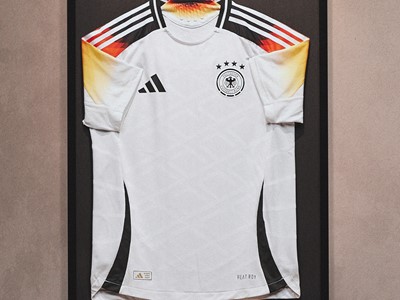
Germany opts for a classic look.
Away
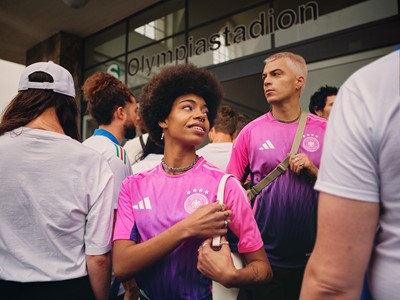
The away threads’ marriage of pink and purple is intended to celebrate the diversity of Germany’s new generation.
Hungary
Home
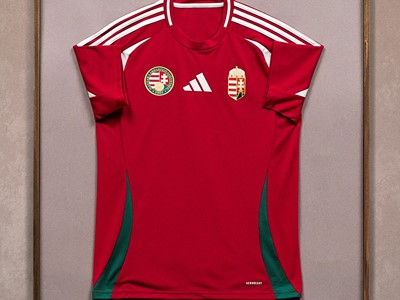
Adidas leaned on the national flag and patterns of the national team’s crest for ideas for Hungary’s home jersey.
Away
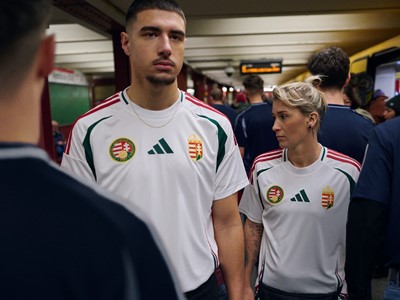
Hungary will wear a simple alternative shirt in Germany.
Italy
Home
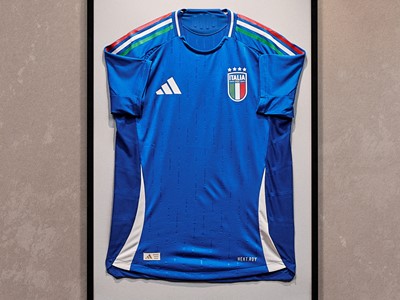
There’s nothing daring about this look, but incorporating the flag colors in the Adidas stripes is a nice touch.
Away
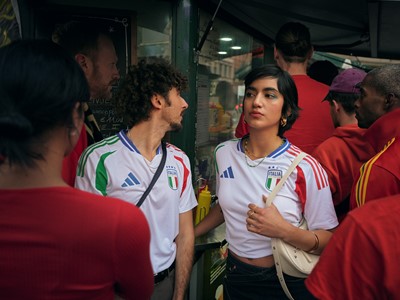
Does Italy’s away shirt look too much like training gear?
Scotland
Home
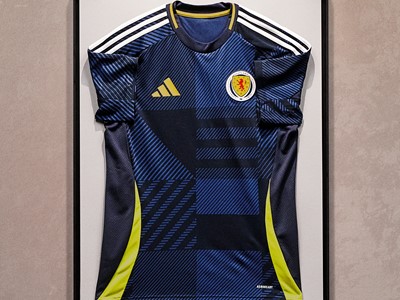
The patterns are a nod to Scottish tartan and heritage.
Away
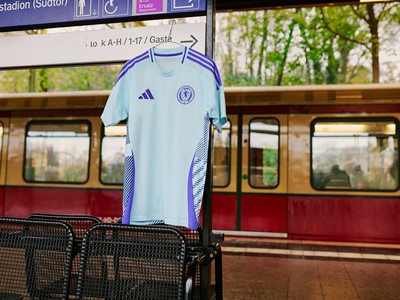
Tartan graphics also leak into Scotland’s away kit.
Spain
Home
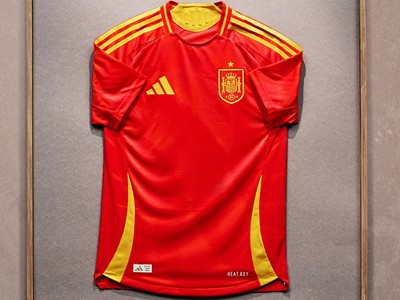
A very basic red-and-yellow theme for Spain’s main outfit.
Away
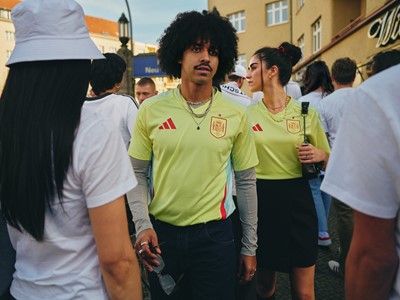
An interesting dash of blue on the side panels and at the base add intrigue to Spain’s away shirt.
Wales
Home
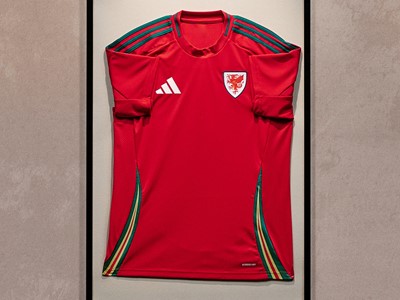
The curled spikes of green, yellow, and red up the side panels neatly round off this classic Welsh top.
Away
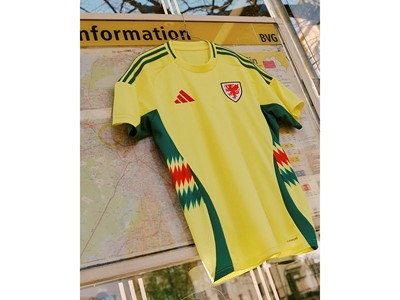
This kit is directly influenced by the Welsh bucket hat, which is a popular item worn by supporters at recent tournaments.
Copa America
Argentina
Home
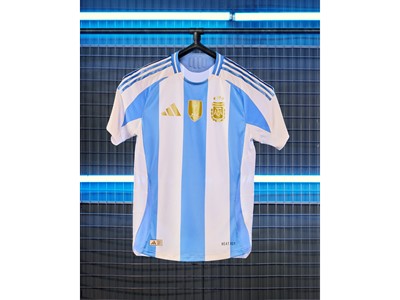
In addition to the shield acknowledging Argentina’s 2022 World Cup triumph, there are further gold details to really drive its global dominance home. And why not?
Away
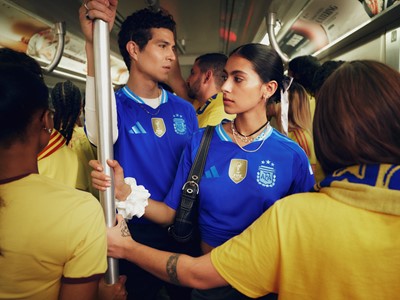
Argentina went quite safe for its away design.
Chile
Home
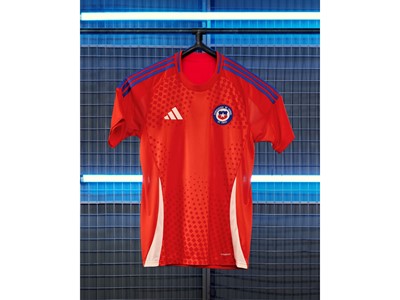
A mosaic of squares forms a star in the middle of Chile’s red home shirt.
Away
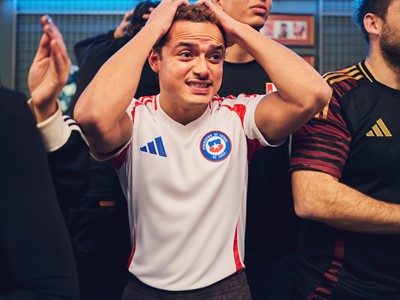
Is this model’s pose foreshadowing Chile’s performance at Copa America?
Colombia
Home
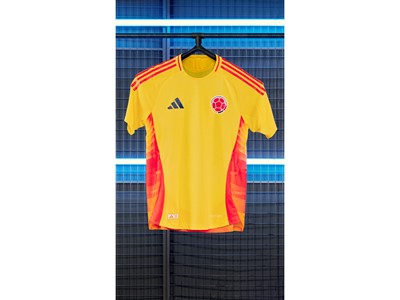
The patterning on the sides brings a unique touch to an otherwise classic Colombian look.
Away
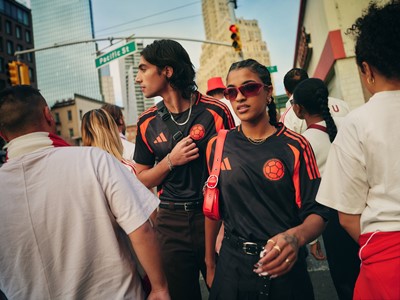
A strong orange tone lifts another dark base for Colombia’s away kit.
Mexico
Home
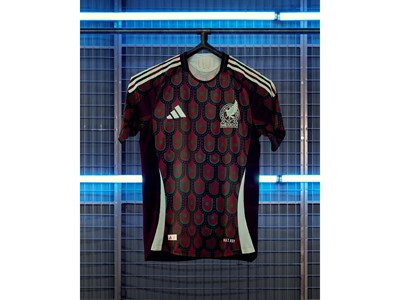
This is probably the best of the bunch. Mexico is always open to trying something different with its main jersey. Instead of green, El Tri will don a uniform with a burgundy-red base.
Away
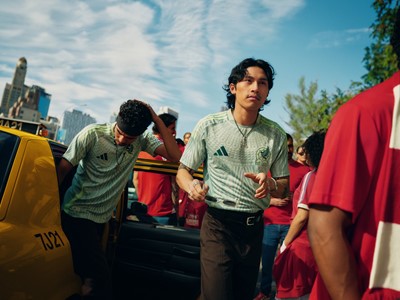
This mint-green effort is another original look for Mexico at Copa America.
Peru
Home
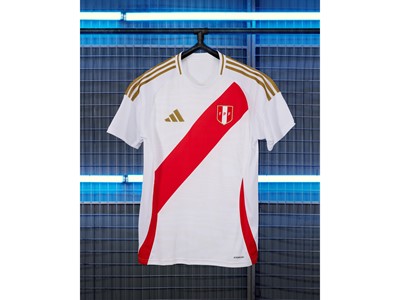
Peru’s red sash is one of the most celebrated adornments of any international jersey, but are the red embellishments rising from the hip a bit too much?
Away
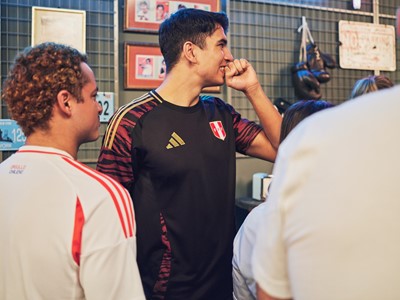
A simple design is spruced up with patterns intended to refer to the cajon, which is a Peruvian percussion instrument.
La Liga
Transfer window preview: 50 players who could move in January
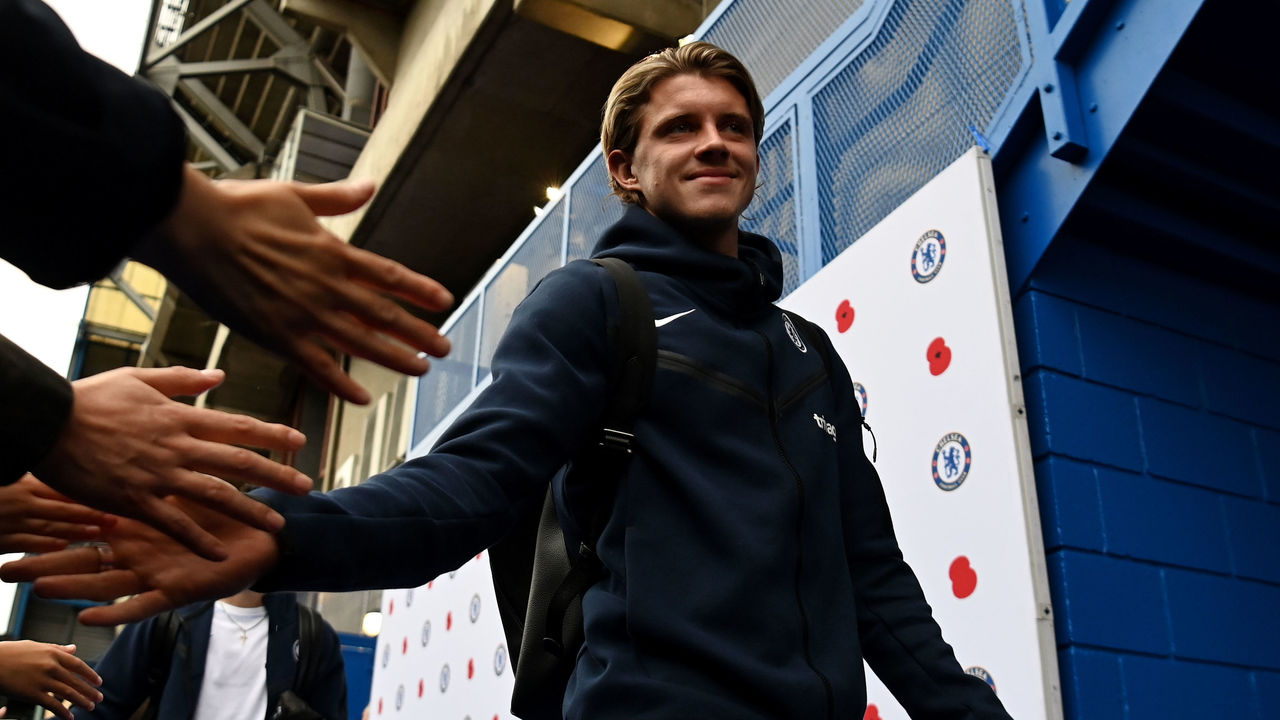
Find the biggest stories from across the soccer world by visiting our Top Soccer News section and subscribing to push notifications.
With the January transfer window set to open on the first day of the new year, we’re teeing up the wheeling and dealing by presenting 50 players who could be on the move.
| LEAGUE | DEADLINE DAY |
|---|---|
| Bundesliga | Feb. 1 (12 p.m. ET) |
| Ligue 1 | Feb. 1 (5 p.m. ET) |
| Premier League | Feb. 1 (6 p.m. ET) |
| La Liga | Feb. 1 (6 p.m. ET) |
| Serie A | Feb. 1 (7 p.m. ET) |
Note: Estimated transfer values provided by transfermarkt.com.
Premier League ?gbeng
Aaron Ramsdale (Arsenal)
Age: 25
Position: Goalkeeper
Estimated value: €28M
Unseated by the arrival of David Raya, Ramsdale’s future is a little murky. Arsenal are unlikely to sanction a loan move, especially to a Premier League rival, but with an eye on Euro 2024, the netminder needs more minutes.
Lloyd Kelly (Bournemouth)
Age: 25
Position: Center-back
Estimated value: €16M
Bournemouth don’t want to lose him, but with Kelly’s contract set to expire in the summer and no sign he’ll renew, defender-needy clubs like Liverpool and Tottenham Hotspur are circling in the hopes of sealing a midseason signing.
Ivan Toney (Brentford)
Age: 27
Position: Striker
Estimated value: €35M
Toney’s eight-month ban for betting breaches ends in January, and his return to the pitch could precipitate a transfer. He’s a proven scorer with 32 goals in 68 Premier League appearances, and plenty of clubs need help up front.
Marc Cucurella (Chelsea)
Age: 25
Position: Left-back
Estimated value: €25M
Despite his recent injury, Cucurella headlines a trio of defenders who may leave west London this winter – Ian Maatsen and Trevoh Chalobah could also depart. Chelsea, as ever, will be fascinating to watch when the window opens.
Conor Gallagher (Chelsea)
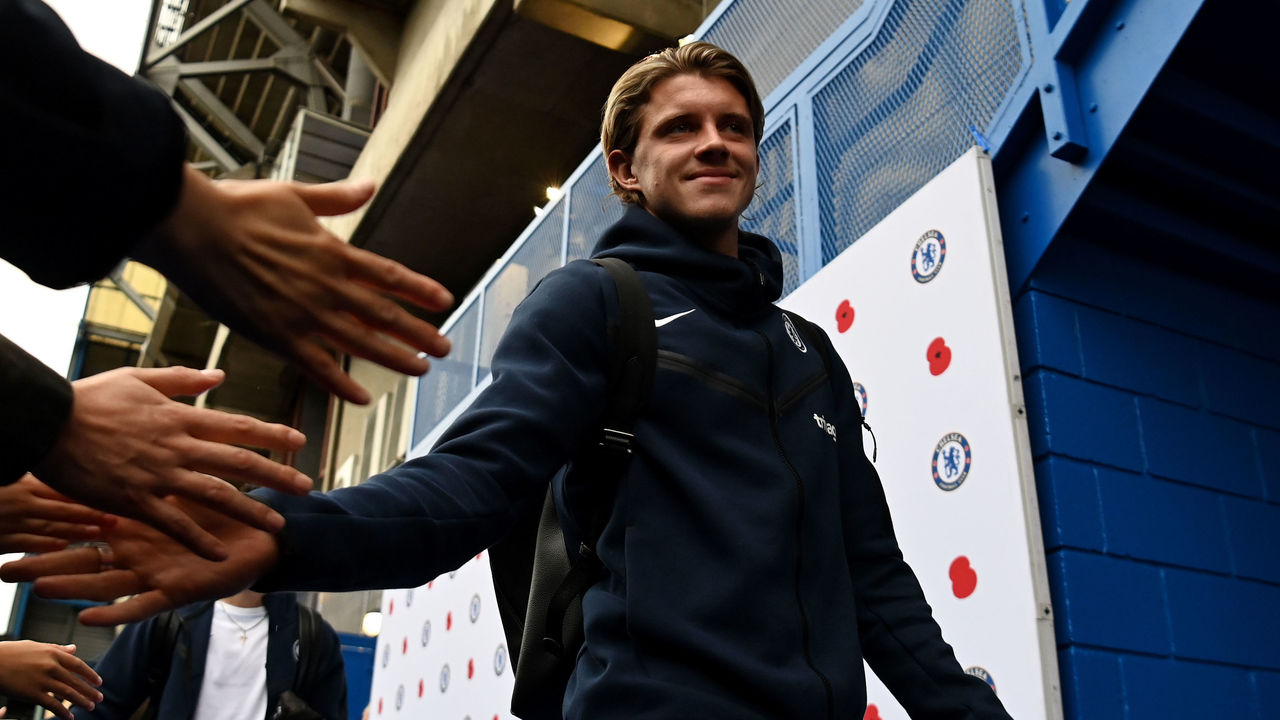
Age: 23
Position: Midfielder
Estimated value: €42M
One of the window’s most intriguing names. Only Axel Disasi has played more minutes for Chelsea this season – Gallagher has even worn the armband – but he represents the Blues’ best chance of making a sizeable profit in January.
Noni Madueke (Chelsea)
Age: 21
Position: Winger
Estimated value: €25M
January is about finding opportunities to bolster your squad or, in some cases, find a piece to push your team over the top. Madueke, clearly very talented but getting few chances to shine at Chelsea, could fit the bill.
Joao Palhinha (Fulham)
Age: 28
Position: Defensive midfielder
Estimated value: €60M
After coming agonizingly close to joining Bayern Munich in the summer – Palhinha was literally in Bavaria waiting, in vain, for a deal to be closed – the excellent midfielder will once again be a hot, though expensive, commodity.
Kalvin Phillips (Manchester City)
Age: 28
Position: Defensive midfielder
Estimated value: €28M
Nobody needs a January transfer more than Phillips, whose career has derailed since joining Manchester City; Pep Guardiola has repeatedly apologized for his lack of opportunities. Juventus are reportedly interested.
Anthony Martial (Manchester United)
Age: 28
Position: Forward
Estimated value: €15M
Erik ten Hag may say that Manchester United aren’t looking to move Martial, but the Frenchman’s limited amount of playing time this season speaks louder than the manager’s words ever will.
Jadon Sancho (Manchester United)
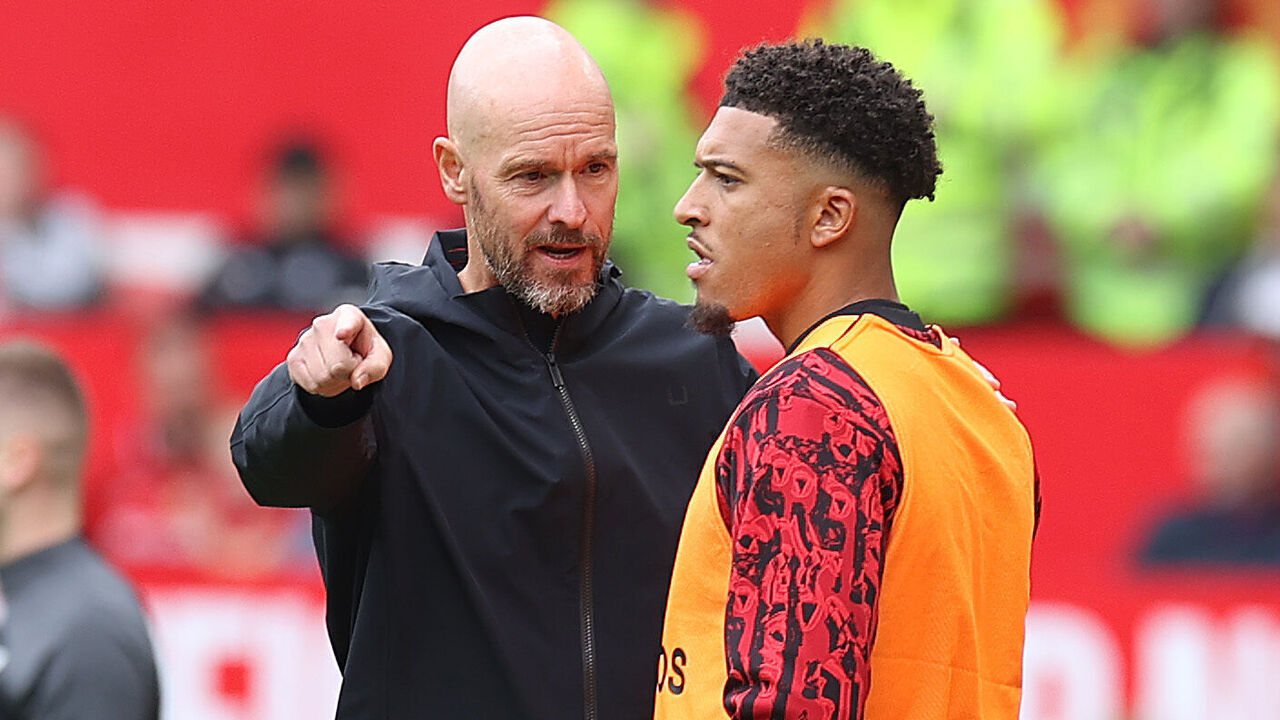
Age: 23
Position: Winger
Estimated value: €23M
With Sancho and Ten Hag perpetually at odds, it’s in everyone’s best interest to just part ways. A loan seems most likely in January, with United having a better chance of recouping some of his huge transfer fee in the summer.
Raphael Varane (Manchester United)
Age: 30
Position: Center-back
Estimated value: €25M
Real Madrid and Bayern Munich need help in central defense, and Varane could represent excellent value. His familiarity with the Spanish club would make his transition seamless, which is always a key consideration in January.
Pierre-Emile Hojbjerg (Tottenham Hotspur)
Age: 28
Position: Midfielder
Estimated value: €28M
Hojbjerg has only started three Premier League matches this season under Ange Postecoglou. In what will become a common refrain on this list, the Dane could depart in search of more regular playing time ahead of Euro 2024.
La Liga ??
Ferran Torres (Barcelona)
Age: 23
Position: Forward, winger
Estimated value: €35M
Despite getting consistent opportunities since joining the club, there’s always been a sense that Barcelona don’t truly believe in Torres. Already fierce competition for minutes will be more extreme following Vitor Roque’s arrival.
Miguel Gutierrez (Girona)
Age: 22
Position: Left-back
Estimated value: €20M
Gutierrez has been one of the breakout performers helping to fuel Girona’s fairy-tale title push. Real Madrid reportedly have an €8-million buyback option on the youngster, who seems destined for a big move soon.
Juan Miranda (Real Betis)
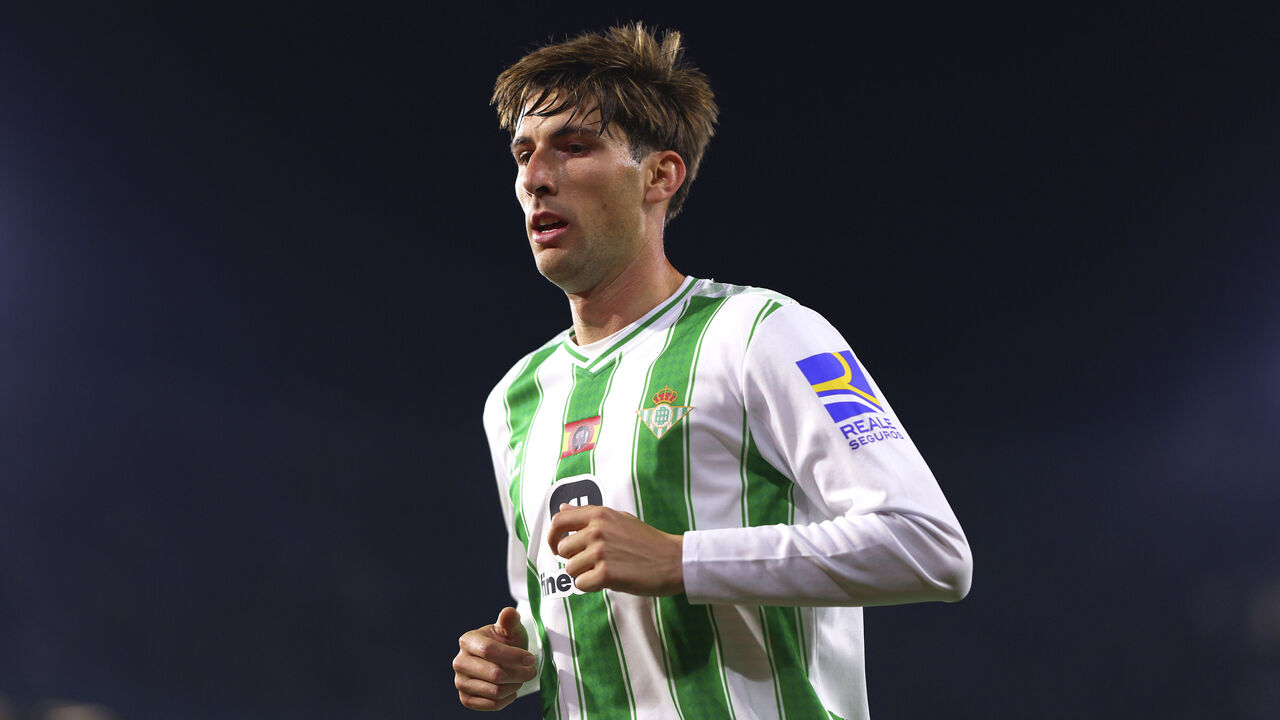
Age: 23
Position: Left-back
Estimated value: €9M
Miranda, a product of Barcelona’s famed academy, is another soon-to-be free agent who could yet leave in January if his club wants to procure a transfer fee. AC Milan, seeking defensive depth, are working to sign the Spaniard.
Rafa Mir (Sevilla)
Age: 26
Position: Striker
Estimated value: €5M
Sevilla are among the most obvious candidates for a big January shakeup following a dismal opening half of the season. Mir’s struggles – just two league starts and one goal – are emblematic of the rough campaign in Andalusia.
Serie A ??
Joshua Zirkzee (Bologna)
Age: 22
Position: Forward
Estimated value: €30M
Zirkzee’s been one of the revelations of the European season, helping power Bologna’s top-four push. The Dutchman reportedly has a €40-million release clause, and Bayern Munich retained a buyback option worth half that.
Radu Dragusin (Genoa)
Age: 21
Position: Center-back
Estimated value: €20M
A physically imposing center-back with the necessary on-ball skills to thrive in the modern game, Dragusin is garnering interest across Europe. Atalanta, perhaps anticipating Giorgio Scalvini’s summer exit, are reportedly keen.
Samuel Iling-Junior (Juventus)
Age: 20
Position: Winger
Estimated value: €20M
The Englishman has received little playing time after breaking into Juventus’ senior side last season. If Juve decide to sacrifice one of their young talents to generate funds, Iling-Junior seems the likeliest candidate at the moment.
Victor Osimhen (Napoli)
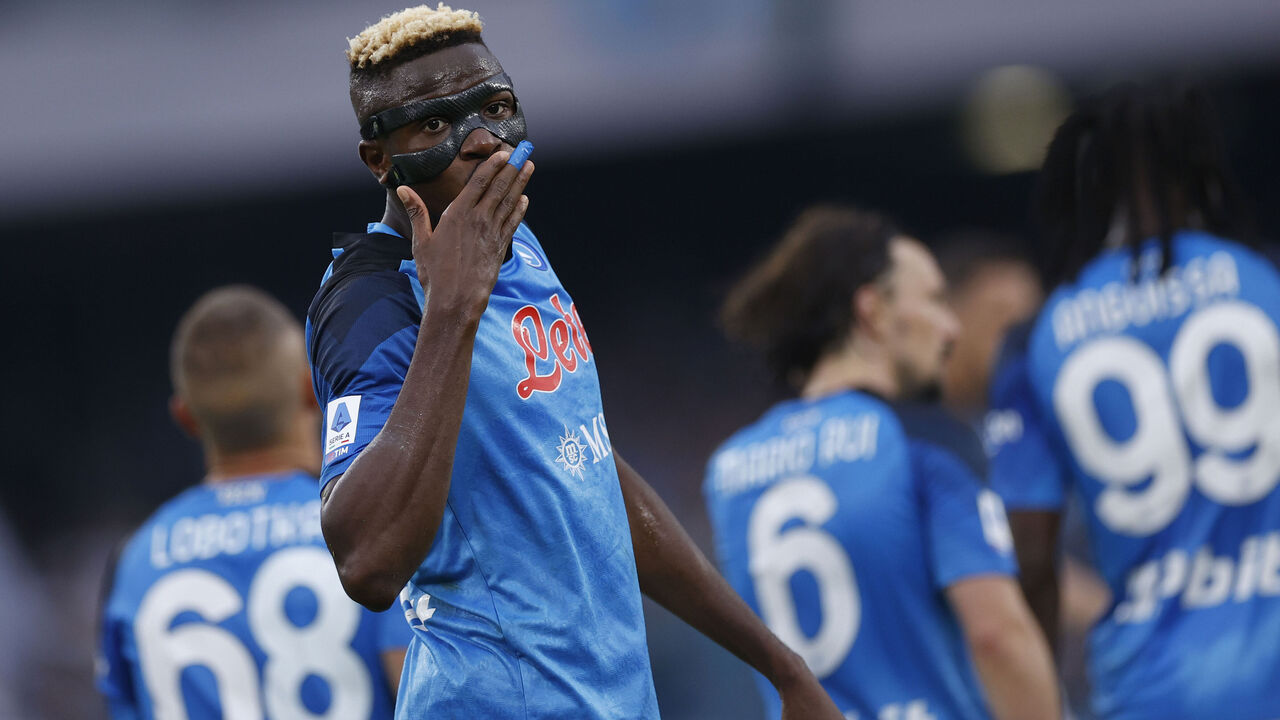
Age: 24
Position: Striker
Estimated value: €110M
Osimhen may have just signed a contract extension with the ailing Italian champions, but that won’t stop the rumors, especially with his reported €130-million release clause. Chelsea remain in desperate need of a proper No. 9.
Lazar Samardzic (Udinese)
Age: 21
Position: Attacking midfielder
Estimated value: €20M
Looking for something – anything, really – to help jump-start their miserable title defense, Napoli have apparently turned their attention to Samardzic, who provides silky dribbling and playmaking ability from midfield.
Bundesliga ??
Piero Hincapie (Bayer Leverkusen)
Age: 21
Position: Center-back
Estimated value: €35M
It’s hard to imagine anyone wanting to leave red-hot Bundesliga leaders Bayer Leverkusen right now, but Xabi Alonso’s preferred back-three doesn’t include the Ecuadorian, which could facilitate a January transfer.
Gio Reyna (Borussia Dortmund)
Age: 21
Position: Attacking midfielder
Estimated value: €20M
Reyna must move to get his once blossoming career back on track. A variety of factors contributed to his recent status as a bit-part player at Dortmund, but he’s flashed enough potential in the past to earn a chance elsewhere.
Donyell Malen (Borussia Dortmund)
Age: 24
Position: Winger
Estimated value: €35M
Dortmund tumbled down the table following a rough run into the winter break, leaving Edin Terzic on thin ice. Against that backdrop, parting with one of your few scoring threats would be a tough sell, but rumors about Malen persist.
Manu Kone (Borussia Monchengladbach)
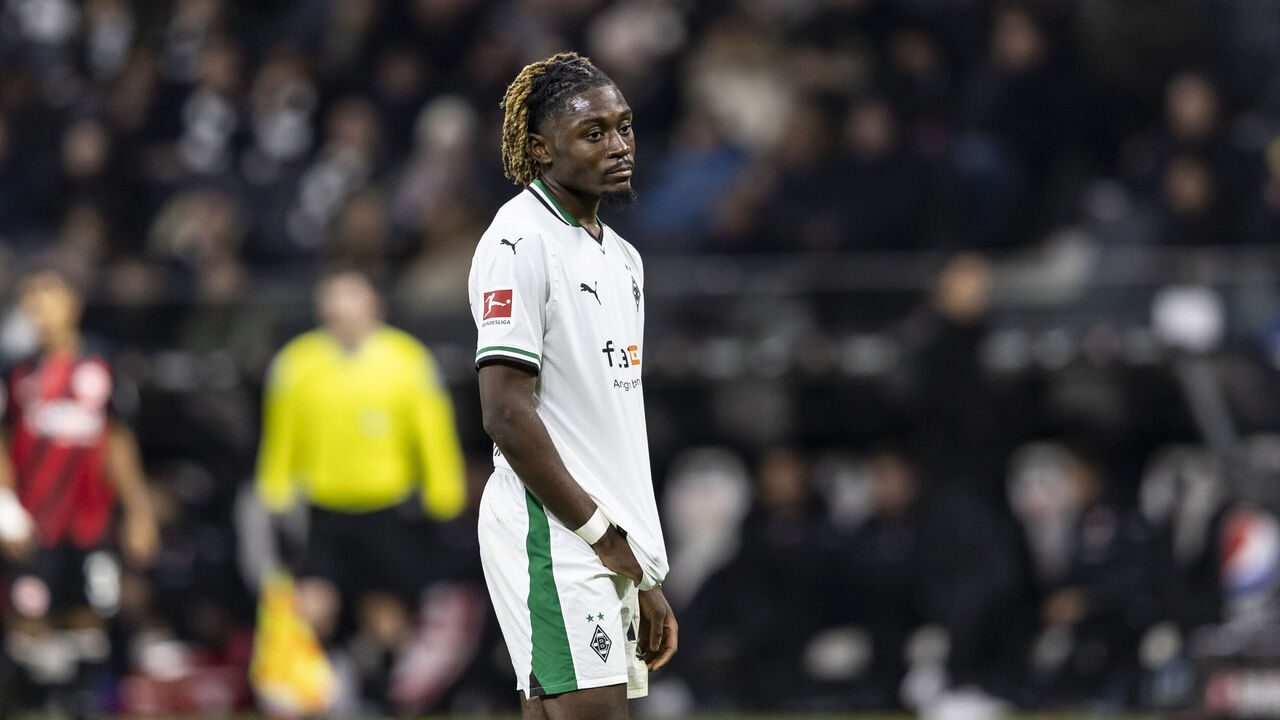
Age: 22
Position: Midfielder
Estimated value: €35M
After several clubs, including Bayern Munich and Liverpool, were linked with his services in the summer, the trail has gone a little cold on Kone of late. That’s sure to change in January. A deadline-day deal is a distinct possibility.
Fabio Carvalho (RB Leipzig)
Age: 21
Position: Attacking midfielder
Estimated value: €14M
Carvalho’s loan move to RB Leipzig simply hasn’t worked out as anyone had hoped. He’s made just three starts, prompting Liverpool to explore the possibility of recalling and sending him elsewhere in January.
Serhou Guirassy (VfB Stuttgart)
Age: 27
Position: Striker
Estimated value: €40M
Scoring 17 goals in 14 Bundesliga games doesn’t go unnoticed. A January move for the Guinean is complicated by his expected involvement in AFCON, but his extremely modest €17.5-million release clause has clubs salivating.
Ligue 1 ??
Tiago Djalo (Lille)
Age: 23
Position: Center-back
Estimated value: €15M
Instead of losing the Portuguese defender for free in the summer, Lille are reportedly considering cashing in now. With Inter, Juventus, and Atletico Madrid all in the mix, the French outfit could incite a decent bidding war.
Leny Yoro (Lille)
Age: 18
Position: Center-back
Estimated value: €25M
Already one of the standout defenders in France despite his tender age, Yoro is someone Lille will fight to keep for as long as possible. PSG, now trying to scoop up every emerging talent in the country, will need to pony up.
Khephren Thuram (Nice)
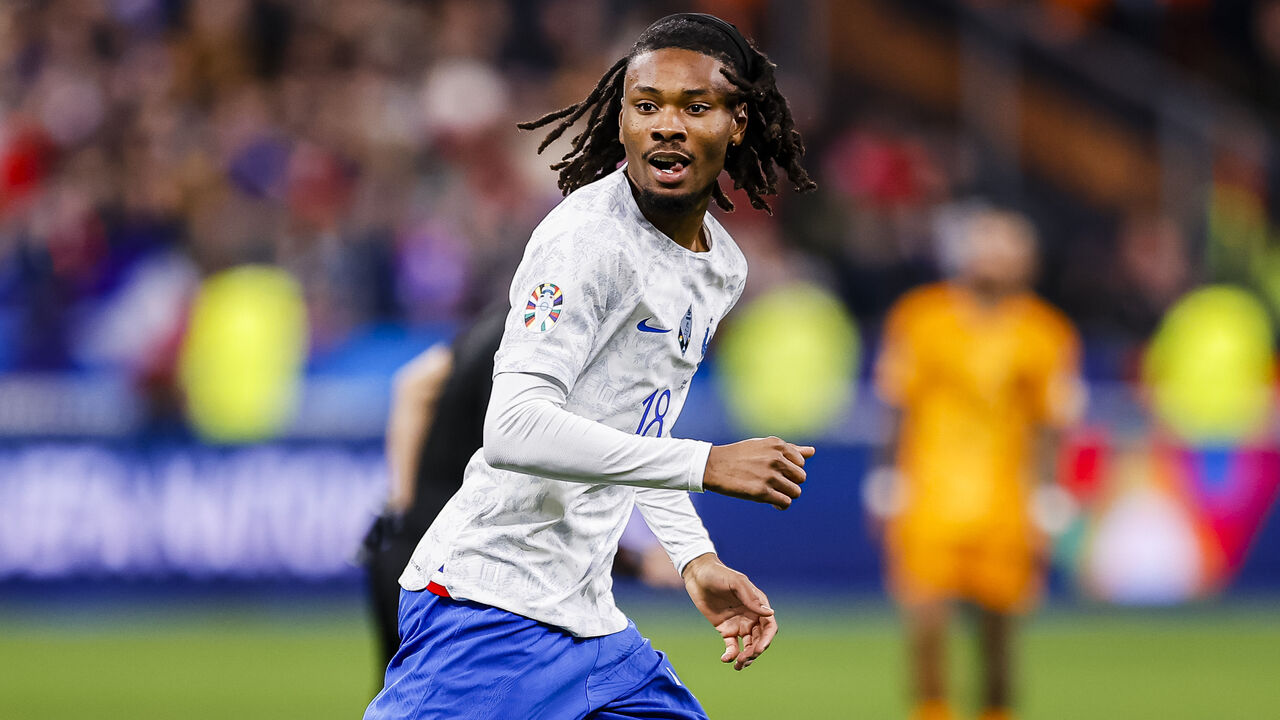
Age: 22
Position: Midfielder
Estimated value: €40M
Thuram, despite interest from England and Italy in the summer, remained in the French Riviera – who could blame him? Both he and teammate Jean-Clair Todibo will feature prominently as the January rumors swirl.
Hugo Ekitike (Paris Saint-Germain)
Age: 21
Position: Striker
Estimated value: €15M
Ekitike’s big move to the French capital went sour very quickly. PSG tried to offload him in the summer, to no avail. Stuck behind Randal Kolo Muani and Goncalo Ramos, he’s played a measly nine minutes in Ligue 1 this season.
Kylian Mbappe (Paris Saint-Germain)
Age: 25
Position: Forward
Estimated value: €180M
What, you thought we’d get through a transfer window without rehashing Mbappe’s flirtations with Real Madrid? The saga will inevitably heat up again now that Madrid can negotiate openly with the impending free agent.
Around the world ?
Jota (Al-Ittihad)
Age: 24
Position: Forward, winger
Estimated value: €9M
Jota’s move to Saudi Arabia has been an unmitigated disaster for everything but his bank account thus far, sparking rumors that the ex-Celtic star could be one of the first players to make a swift return to Europe from the Middle East.
Thiago Almada (Atlanta United)
Age: 22
Position: Attacking midfielder
Estimated value: €27M
It’s simply a matter of when Almada makes the leap to Europe. The only question is whether the diminutive Argentine will break Miguel Almiron’s €24-million record as the most expensive outgoing transfer in MLS history.
Antonio Silva (Benfica)
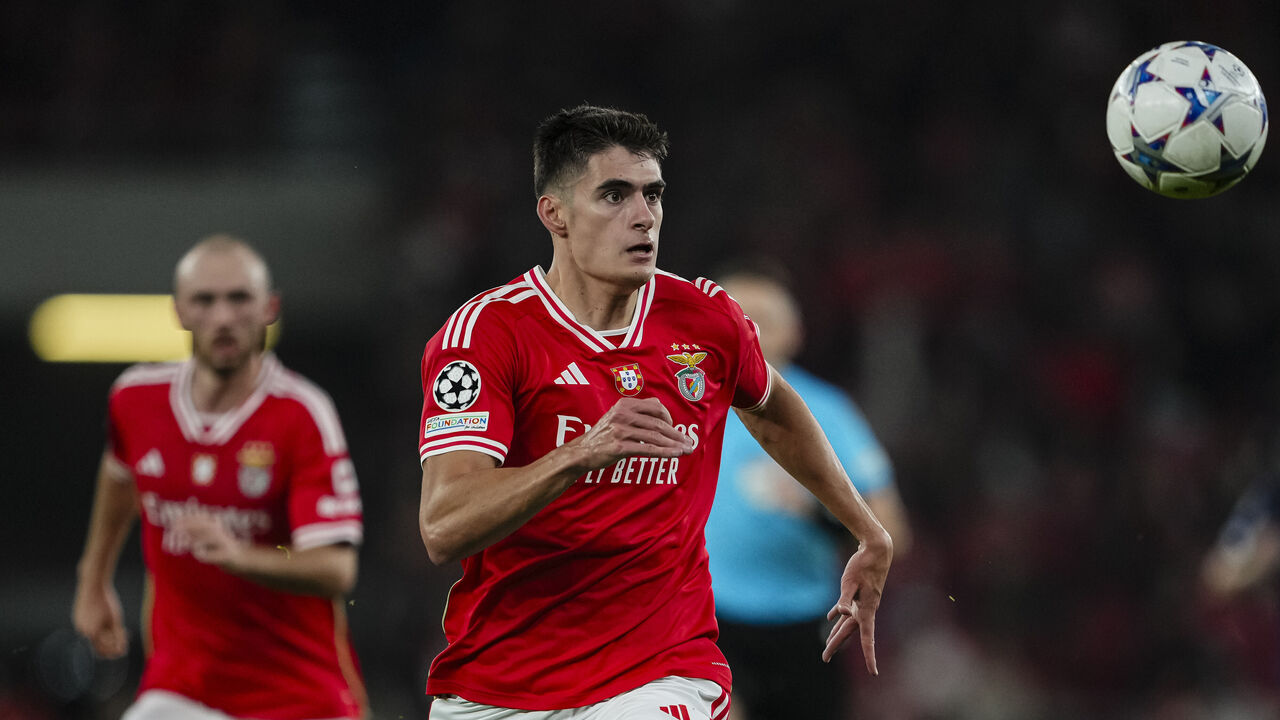
Age: 20
Position: Center-back
Estimated value: €45M
Enzo Fernandez’s mammoth move to Chelsea proved that Benfica aren’t afraid to sanction sales of vital players in January if the offer is sweet enough. Silva, whose price tag is only rising, could be next in line.
Valentin Barco (Boca Juniors)
Age: 19
Position: Left-back
Estimated value: €13M
Chelsea are reportedly keen on Barco. Strasbourg, the French side also owned by the Todd Boehly-Clearlake Capital consortium, could be used by the Blues as a means to beat the likes of Manchester City to the Boca starlet.
Tajon Buchanan (Club Brugge)
Age: 24
Position: Winger, wing-back
Estimated value: €8M
Inter are reportedly advancing in talks for the rapid Canadian, who’s viewed as the ideal replacement for the injury-ravaged Juan Cuadrado. Buchanan would serve as Denzel Dumfries’ backup in Simone Inzaghi’s 3-5-2 formation.
Benjamin Rollheiser (Estudiantes de La Plata)
Age: 23
Position: Winger
Estimated value: €10M
Newcastle United, decimated by injuries and in search of reinforcements, are reportedly tracking the electrifying dribbler, who’s lighting things up in Argentina. Not to be outdone, Benfica and Atletico Madrid are also circling.
Brandon Vazquez (FC Cincinnati)
Age: 25
Position: Striker
Estimated value: €8.5M
Vazquez was unable to replicate his breakout 2022 campaign this past year, but that hasn’t deterred clubs intrigued by his blend of power and scoring prowess. Brentford, given the uncertainty around Toney, could make a move.
Nico Gonzalez (FC Porto)
Age: 21
Position: Midfielder
Estimated value: €9M
Things haven’t quite worked out as planned after a summer move to Porto, with the former Barcelona midfielder spending most of his time on the bench. An immediate return to La Liga shouldn’t be ruled out.
Mehdi Taremi (FC Porto)
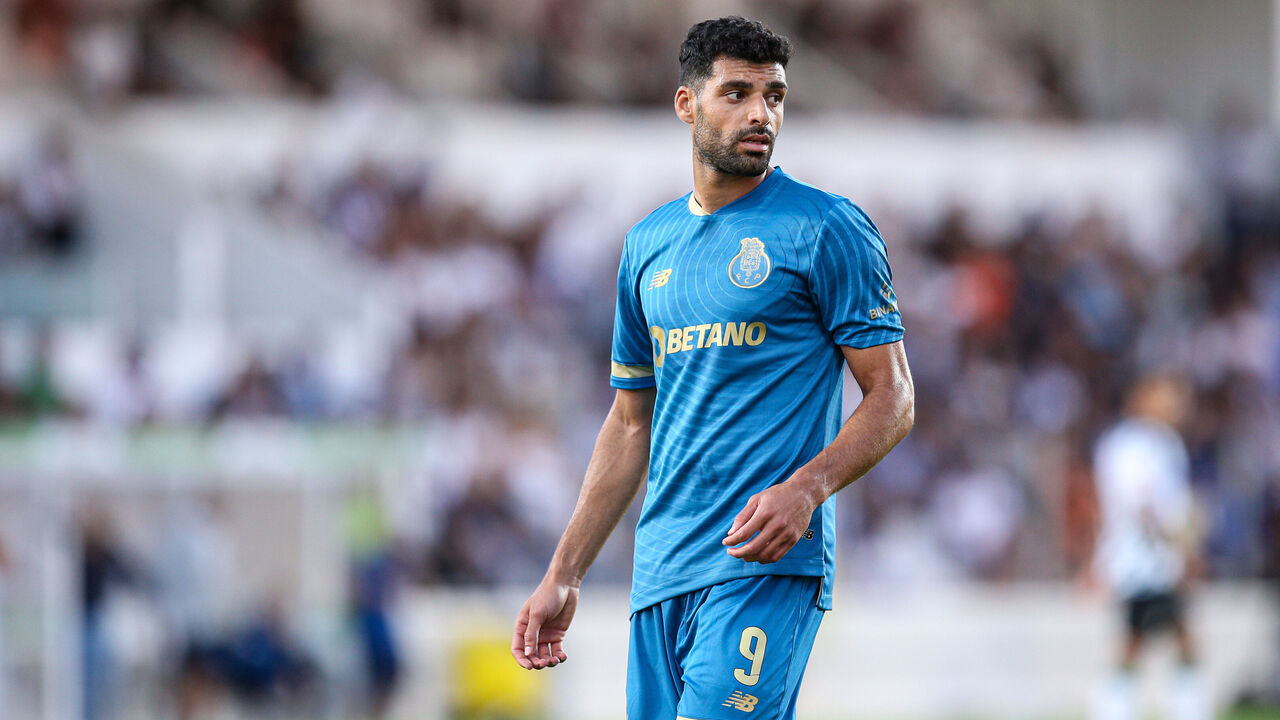
Age: 31
Position: Striker
Estimated value: €12M
Inter continue to show strong interest in Taremi, who was one of their targets in the summer window before they settled for a low-cost option in Marko Arnautovic. The Iranian striker is a free agent at the end of the season.
Santiago Gimenez (Feyenoord)
Age: 22
Position: Striker
Estimated value: €50M
The prolific Mexican is one of the game’s most coveted scorers after a sensational 2023 in which he broke Luis Suarez’s record for most Eredivisie goals in a calendar year. Feyenoord will demand a fortune, and rightly so.
Andre (Fluminense)
Age: 22
Position: Defensive midfielder
Estimated value: €25M
The Brazilian, who was scouted by some of the Premier League’s top teams over the summer, put them all on high alert when he recently said his “big dream” is to play in England. How long can Fluminense hold on to him?
Denis Bouanga (LAFC)
Age: 29
Position: Forward
Estimated value: €10M
On the heels of capturing the MLS Golden Boot in 2023, Bouanga suggested he could soon return to Europe. Any move would require a “hugely expensive” transfer fee, according to LAFC general manager John Thorrington.
Johan Bakayoko (PSV Eindhoven)
Age: 20
Position: Winger
Estimated value: €40M
Wingers who excel at beating their defender and teeing up teammates inside the penalty area are always in high demand, so the collection of big clubs eyeing Bakayoko should come as no surprise. An opulent transfer beckons.
Georgiy Sudakov (Shakhtar Donetsk)
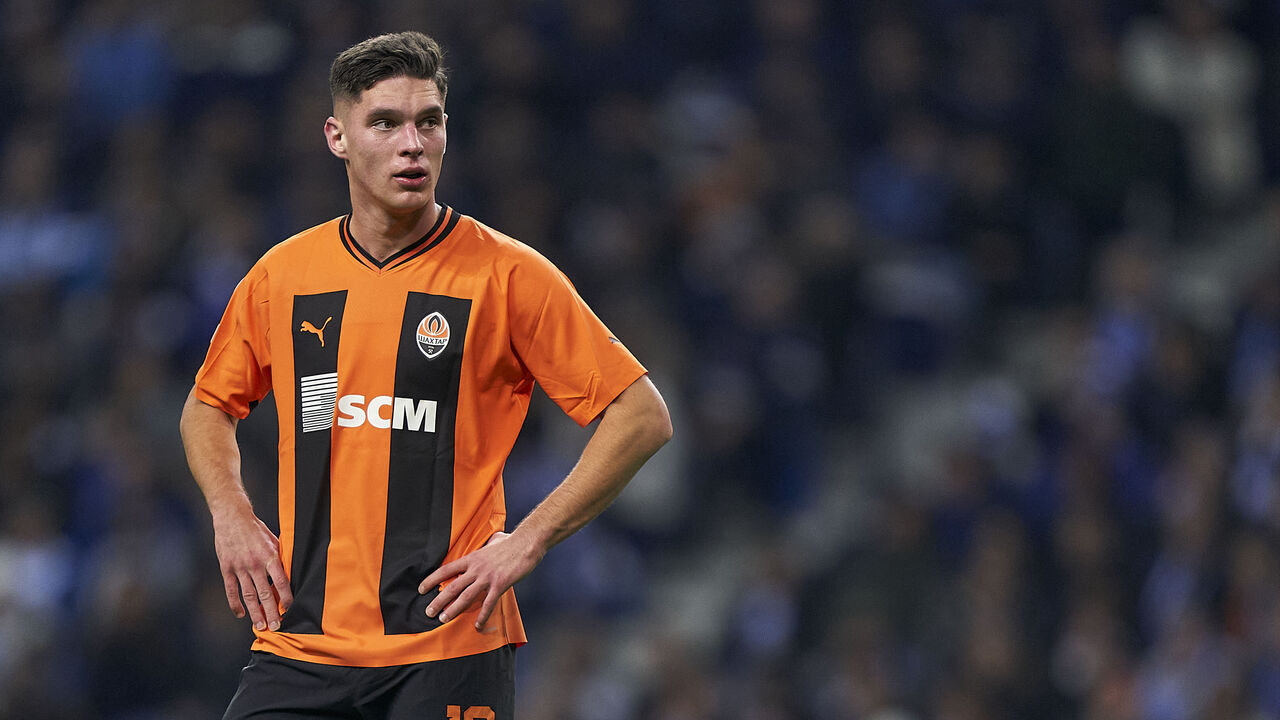
Age: 21
Position: Attacking midfielder
Estimated value: €18M
Already a regular for his national team, the Ukrainian is being monitored by Juventus, who are looking for more guile and creativity in midfield amid the continued absences of Paul Pogba and Nicolo Fagioli.
Viktor Gyokeres (Sporting CP)
Age: 25
Position: Striker
Estimated value: €45M
Sporting made out like bandits when they signed Gyokeres from Coventry City for a modest €20 million this past summer. The Swede is now worth more than double that amount after going on a tear since arriving in Portugal.
Goncalo Inacio (Sporting CP)
Age: 22
Position: Center-back
Estimated value: €40M
Like his compatriot Silva at Benfica – a player to whom he’s often compared – Inacio has been scouted by some of the continent’s heavyweights. The defender reportedly has a €60-million release clause in his contract.
Claudio Echeverri (River Plate)
Age: 17
Position: Attacking midfielder
Estimated value: €12M
Manchester City are working hard to beat Barcelona to Echeverri’s coveted signature. The ascendant Argentine was one of the standout players at the recent Under-17 World Cup and could reportedly cost up to €25 million.
Arthur Vermeeren (Royal Antwerp)
Age: 18
Position: Defensive midfielder
Estimated value: €30M
Chances are your favorite club has been linked with Vermeeren at some point in recent weeks. Judging by his displays in the Champions League, the prodigious Belgian already looks capable of handling a big transfer.
La Liga
theScore's 50 favorite moments of 2023: Titles, twists, and one epic speech
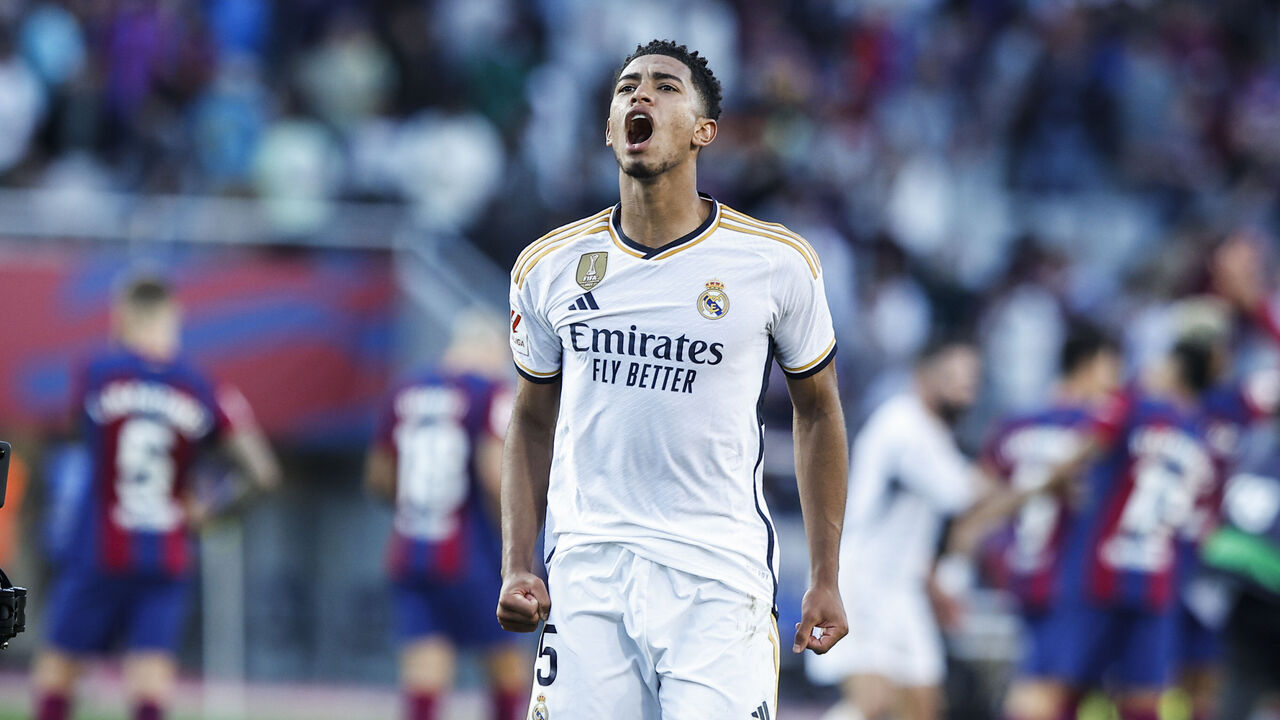
This year in sports was defined by inspiring stories, historic achievements, and surreal events that not even Hollywood could script. We loved them all. With 2023 drawing to a close, theScore is looking back on 50 moments that resonated most with us over the past 12 months. Our five-part series, which counts down every Friday in December, continues below with moments 30-21.
| Dec. 1 | Dec. 8 | Dec. 15 | Dec. 22 | Dec. 29 |
|---|---|---|---|---|
| 50-41 | 40-31 | 30-21 | 20-11 | 10-1 |
30. Bellingham takes down Barca ?
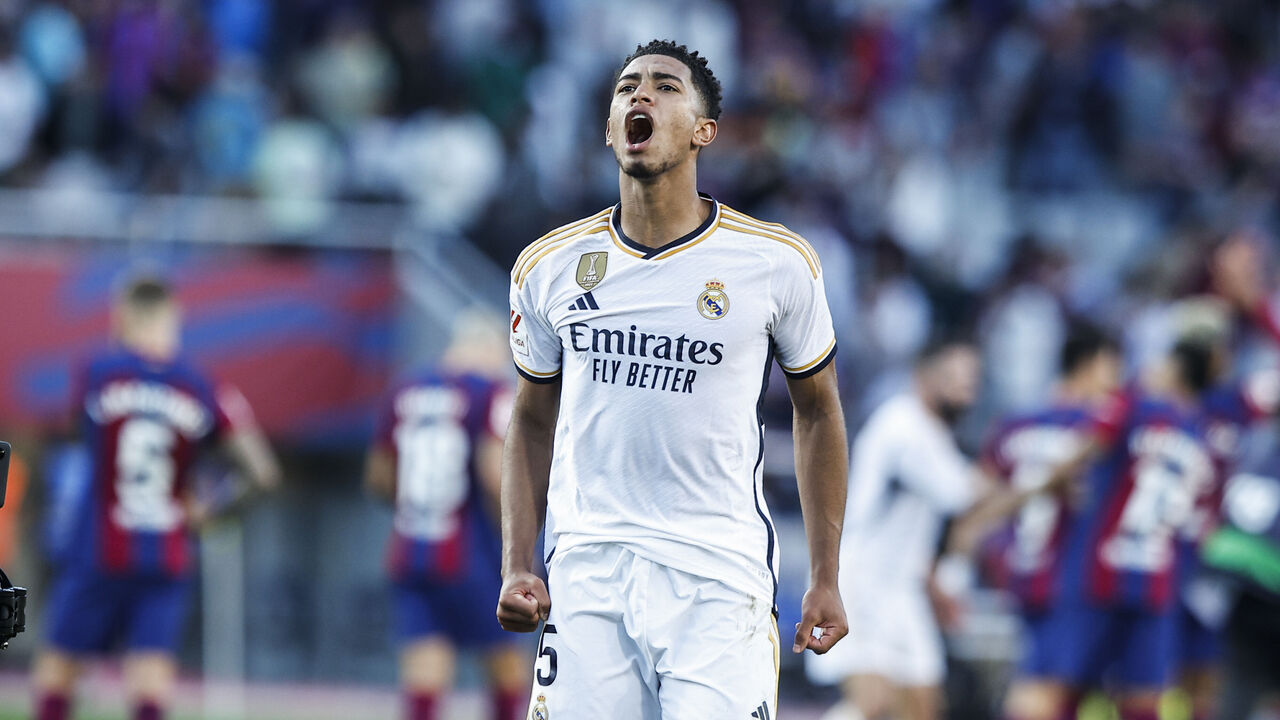
Jude Bellingham was already hailed as the second coming of Cristiano Ronaldo before he led Real Madrid to victory in his first Clasico. The English midfielder morphed into one of the best finishers in the world after joining the club from Borussia Dortmund. His 13 goals in his first 10 games – including various winning strikes – were two more than Ronaldo scored to start his iconic career in Madrid. But nothing compared to Bellingham’s heroics against Madrid’s bitter rivals, Barcelona. After scoring a spectacular equalizing goal from 30 yards out, the 20-year-old further endeared himself to fans with an opportunistic winner in the dying minutes. – Gordon Brunt
29. Etienne’s Pyrrhic performance ?
I played against myself in fantasy fb today ?
— Travis Etienne Jr?? (@swaggy_t1) October 8, 2023
Everyone loves a big fantasy football performance – unless you’re on the wrong side of it. Imagine how Travis Etienne felt after posting one of the best games of his career while playing against himself in fantasy football. The running back exploded for 136 rushing yards, four receptions, 48 receiving yards, a pair of touchdowns, and a two-point conversion against the Bills in Week 5. His opponent surely appreciated the 30+ fantasy points, but Etienne was likely happier winning the game in real life on the back of his dominant outing. – Andrew Dixon
28. PGA TOUR, LIV Golf join forces ?
If you can’t beat ’em, join ’em. After more than a year of legal battles, the PGA announced a surprise merger with Saudi Arabia’s LIV Golf, shocking just about everyone. While LIV golfers like Phil Mickelson rejoiced, many PGA golfers found out about the merger through a leaked press release on social media, and members of Netflix’s docuseries “Full Swing” found out on camera. Those who refused LIV Golf’s massive payouts were angered by the PGA’s lack of loyalty, and Tiger Woods was “frustrated” with the lack of player involvement. The tours have until Dec. 31 to finalize the agreement but, regardless of the outcome, June 6 will go down in golf history as a day stranger than fiction. – Sarah Wallace
27. FDU stuns No. 1 Purdue ?
(16) FDU UPSETS (1) PURDUE ???
MARCH. KEEPS. ON. GIVING. #MarchMadness pic.twitter.com/4T0K3n13Er
— NCAA March Madness (@MarchMadnessMBB) March 18, 2023
Five years after No. 1 Virginia lost to No. 16 UMBC, New Jersey’s Fairleigh Dickinson handed Purdue an opening-round loss in the same setup. The Knights had to win in the First Four to qualify, while the Boilermakers lost four games to end the regular season before winning the Big Ten title. FDU held off No. 1 Purdue with two clutch blocks in the final minute of play to advance the Knights to the second round. Meanwhile, No. 4 Virginia lost to No. 13 Furman, marking the second time in three years the Cavaliers lost in the first round. – Donald Higney
26. Aces breathe rarefied air ?
The Las Vegas Aces and New York Liberty were on a collision course to meet in the WNBA Finals all season long. Both teams were loaded with stars and dominated in the regular season to earn the top seeds in their respective conferences. The Aces took the first two games at home before the Liberty responded with a victory in Game 3. Las Vegas lost starting point guard Chelsea Gray and starting center Kiah Stokes to injuries before Game 4 but withstood their absences to claim a 70-69 victory. The win made them just the third repeat champion in WNBA history, and the first since 2002. – Josh Goldberg
25. José Ramírez decks Tim Anderson ?
It’s fight night in Cleveland ? pic.twitter.com/3NEIpBEbSf
— White Sox Talk (@NBCSWhiteSox) August 6, 2023
It was a bad, bad year for Tim Anderson. The former batting champ struggled through injuries and underperformed in the most disappointing campaign of his career. But the worst night of his dreadful season came on Aug. 5 when he picked a fight with the wrong guy. The White Sox shortstop hurled his glove to the ground and put his dukes up after getting into a verbal dispute with Guardians slugger José Ramírez – which turned out to be a poor decision. Anderson hit the dirt like a ton of bricks after catching a wild overhand right from Ramírez. The fight led to a bench-clearing brawl and Eloy Jiménez even got stepped on as Anderson was sidelined recovering from embarrassment. – Bryan Mcwilliam
24. Nuggets, Jokic claim 1st title ?
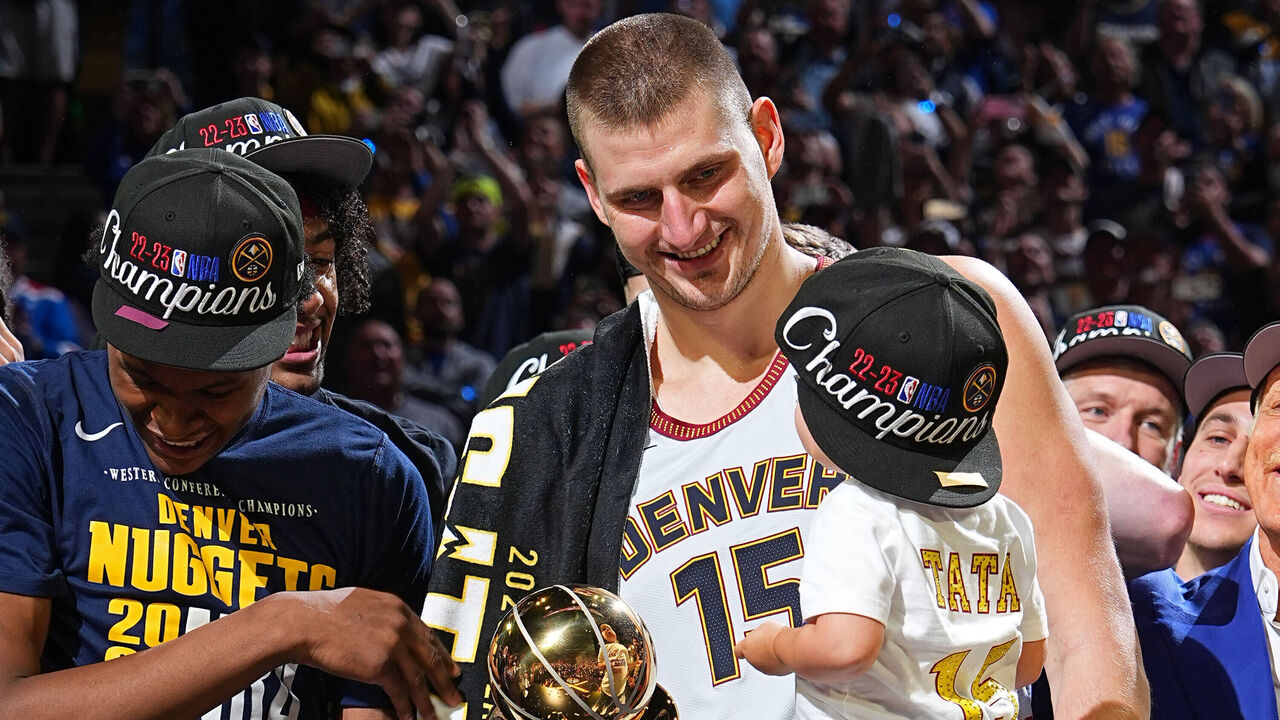
For the fifth straight season, the NBA got a new champion. The Denver Nuggets won their first championship after taking down the Miami Heat in June. Nikola Jokic dominated the playoffs, averaging 30 points, 13.5 rebounds, 9.5 assists, and 1.1 steals per game – elevating his game as the competition and stakes increased every round. Denver got a boost from Jamal Murray, who put up 26.1 points and 7.1 assists in the postseason as he played in his first campaign after an ACL tear. With this tandem, the Nuggets look to be a formidable championship contender for the foreseeable future. – Higney
23. Coco conquers US Open ?
Greatness was expected of Coco Gauff ever since she made her professional debut at 14 years old. But those expectations quickly became a burden, weighing her down even as she spent her high school years winning various 500- and 1,000-level tournaments. So when she came back from a set down against Aryna Sabalenka to win the US Open in September – clinching her first major title at the grand old age of 19 – Coco had a few things to say. “To those who thought they were putting water on my fire, you were really adding gas to it, and now I’m really burning so bright right now,” she said as the 28,000 at Arthur Ashe Stadium erupted in support. Now it’s no longer about whether Coco can win majors, but how many victories she’ll collect. – Anthony Lopopolo
22. You come at the king … ?
LEBRON JAMES IS IN #PLAYOFFMODE
CLUTCH AND-1 AS GAME 4 COMES TO A CLOSE ON TNT. pic.twitter.com/mRmbgssUzQ
— NBA (@NBA) April 25, 2023
LeBron proved that you can’t count him out, even during his 20th NBA season. After then-Memphis Grizzlies wing Dillon Brooks sent him numerous taunts and a hit in the groin, LeBron got his revenge. Leading by three points in overtime of Game 4 in their opening-round playoff series, the dueling players found themselves matched up – with LeBron driving past Brooks and drawing a timely foul to help put the lower-seeded Lakers up 3-1 in the series. In a cathartic moment, King James burst into emotion as the Lakers crowd went crazy. L.A. went on to win the series, while the Grizzlies declined to re-sign Brooks, allowing him to join the Houston Rockets. – Higney
21. Wild Bill’s legendary parade speech ?
Warning: Video contains coarse language
William Karlsson just gave one of the greatest speeches ever, absolute all-timer#VegasBorn pic.twitter.com/DeWcncvNJr
— Hockey Daily 365 l NHL Highlights & News (@HockeyDaily365) June 18, 2023
There have been some incredible Stanley Cup parade speeches over the years, but Vegas Golden Knights forward William Karlsson gave one for the ages in June. The moment he took the mic shirtless and drenched in sweat, it was clear he was about to deliver an all-timer. It’s two minutes of absolute gold: Karlsson initially censoring himself but dropping an actual F-bomb 22 seconds later. The Arizona Coyotes catching a stray. That poor woman trying in vain to get him to wrap it up with a tap on the back, the hand-across-the-throat gesture, a plea of “let’s go,” and finally dragging him across the stage. Perfection. – Josh Gold-Smith
Let us know what your favorite sports moments were in the comments!

Breaking down thrilling EPL title race with 10 games left

Euro 2024 playoffs: Miraculous Ukraine comeback, big result for Wales

Managerial merry-go-round: Predicting hires for marquee jobs

The Champions League's best XI so far

35 stars who will define the summer transfer window

Ajax show Juventus that winning requires more than individual quality
Trending
-
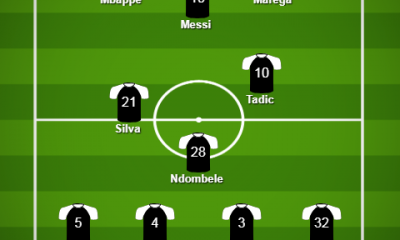
 Champions League5 years ago
Champions League5 years agoThe Champions League's best XI so far
-
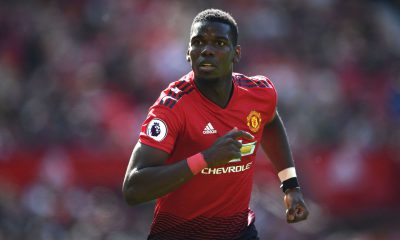
 Serie A5 years ago
Serie A5 years ago35 stars who will define the summer transfer window
-

 Serie A5 years ago
Serie A5 years agoAjax show Juventus that winning requires more than individual quality
-
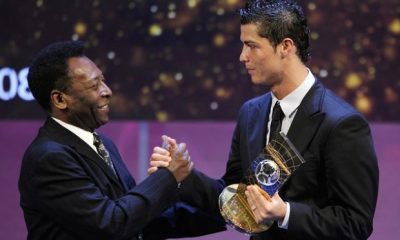
 Uncategorized3 years ago
Uncategorized3 years agoIFFHS publishes the list of top scorers in football history – Romario first, Ronaldo third
-
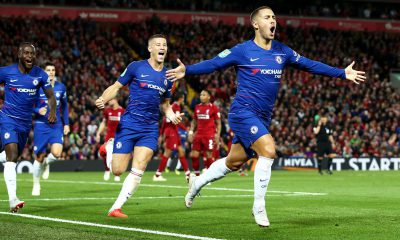
 Premier League5 years ago
Premier League5 years agoTransfer grades: Assessing Hazard’s move to Real Madrid
-
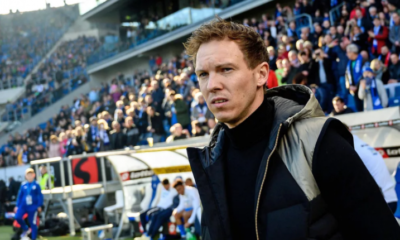
 Sports5 years ago
Sports5 years agoReady Newest Trainer in Bundesliga History, retire SOLSKYER.
-
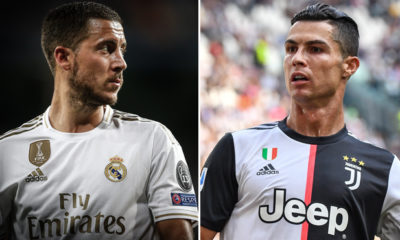
 Sports5 years ago
Sports5 years agoWenger: Hazard can’t replace Ronaldo.
-

 Sports5 years ago
Sports5 years agoMastur Talent Returns: In Milan I was a chance to make money, penalized me for growing up as a footballer.

